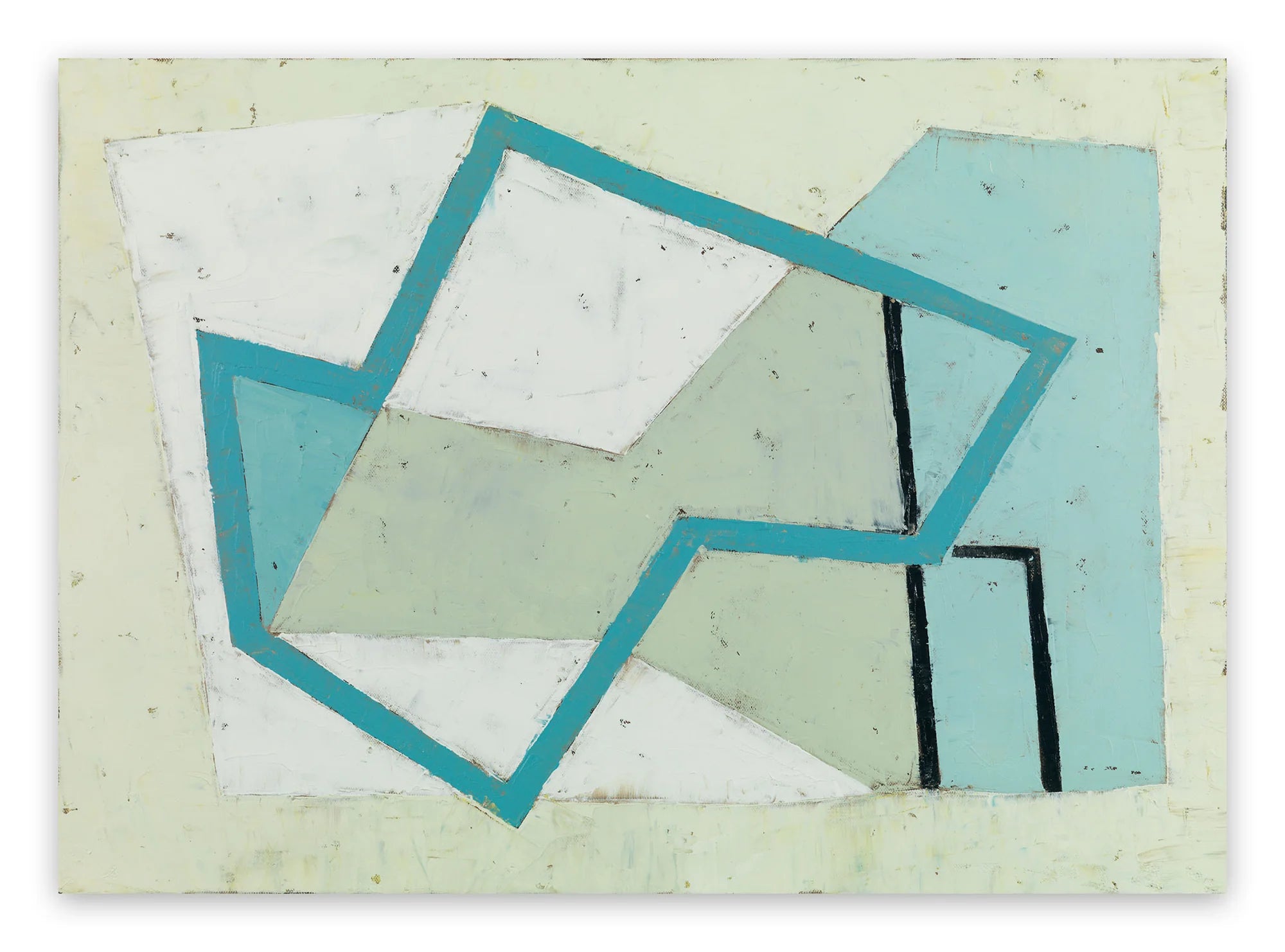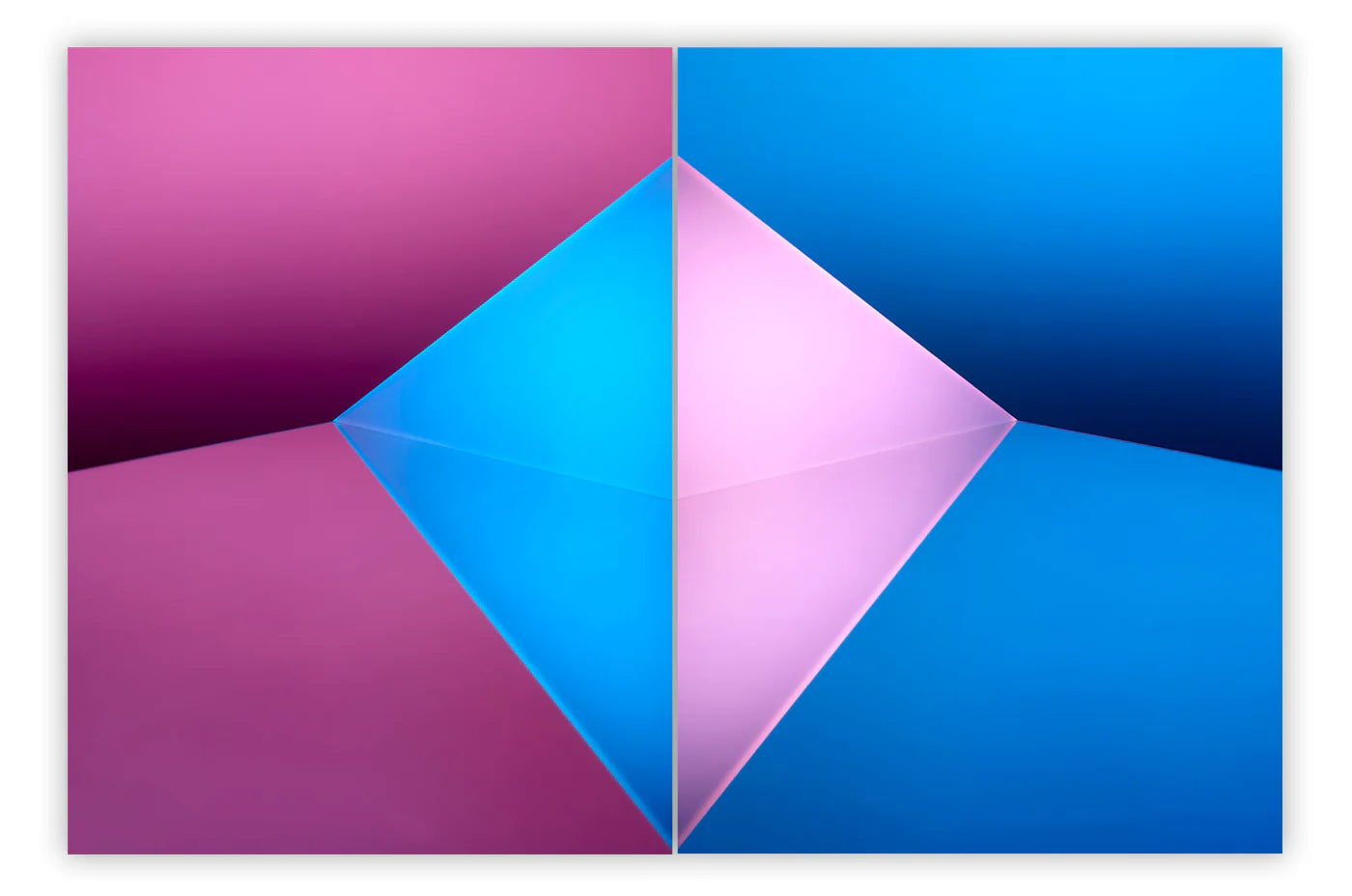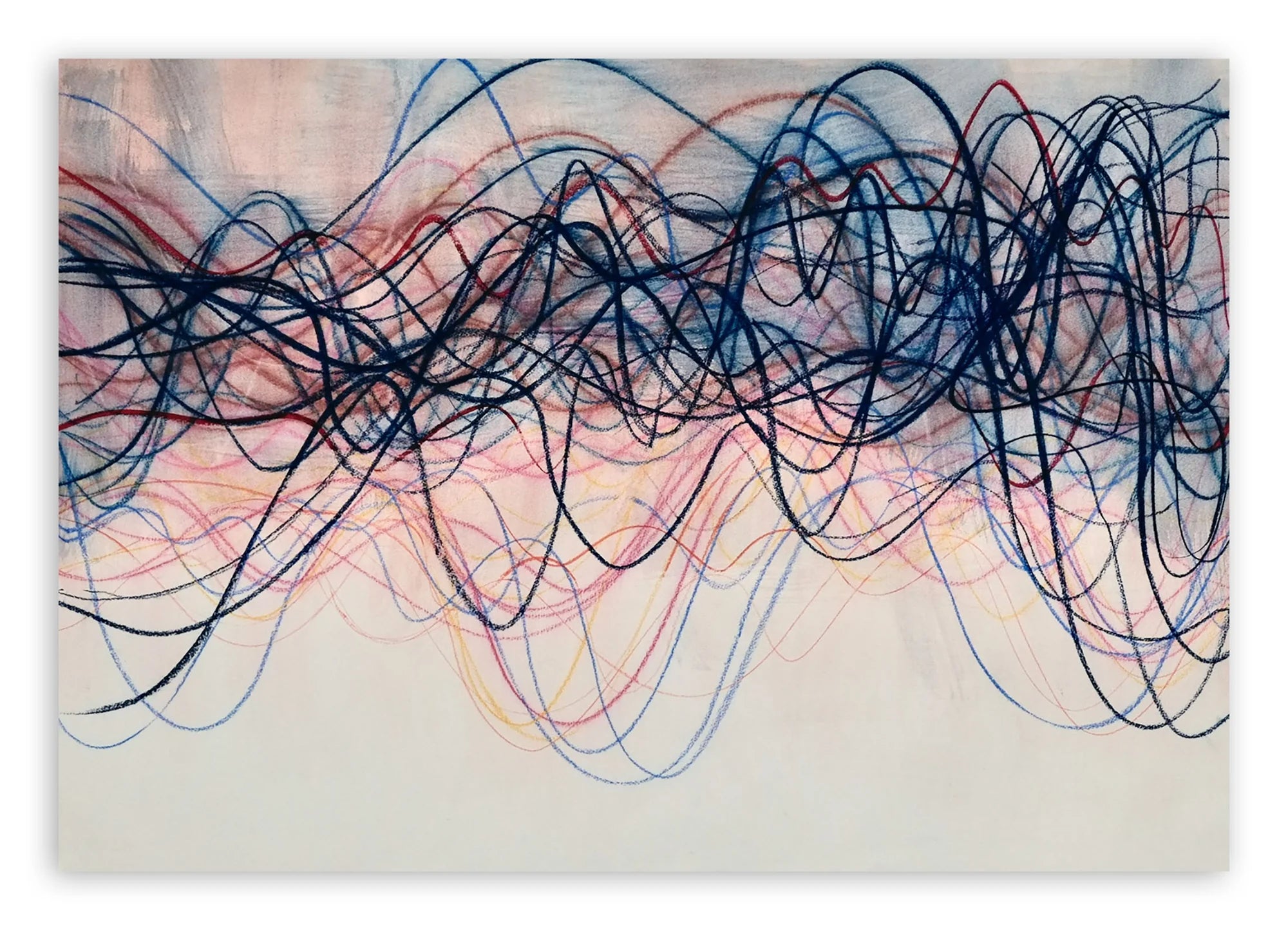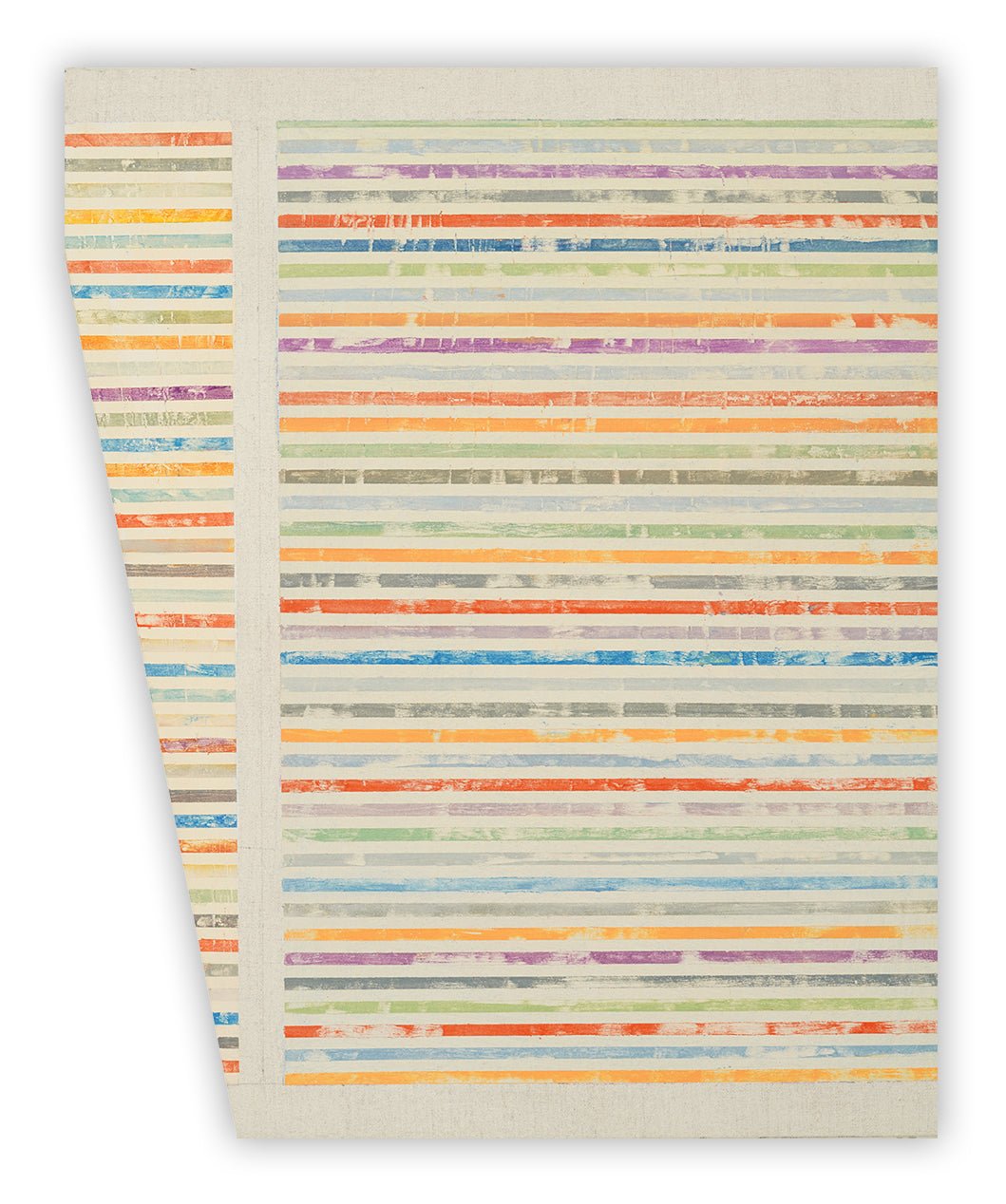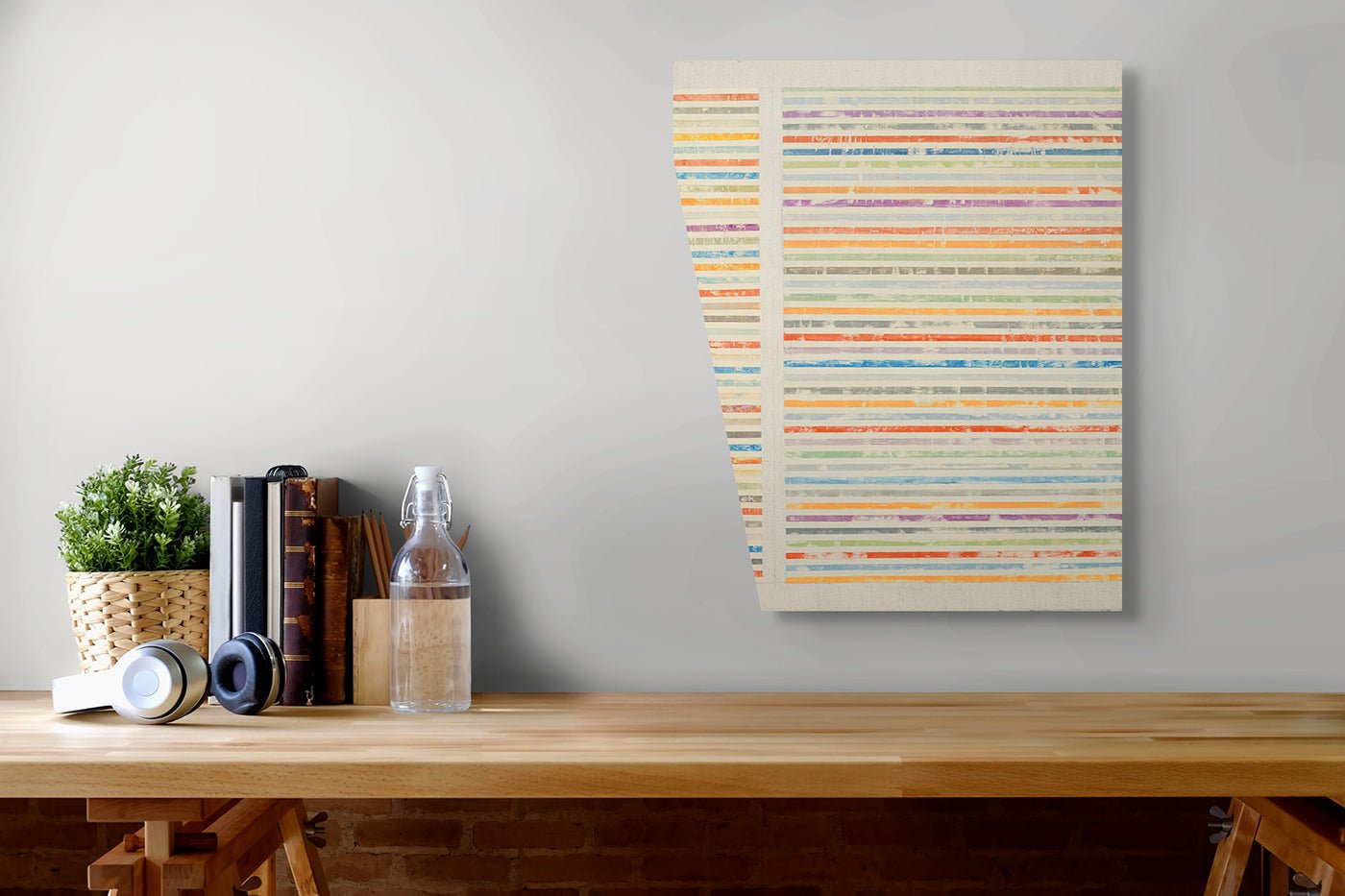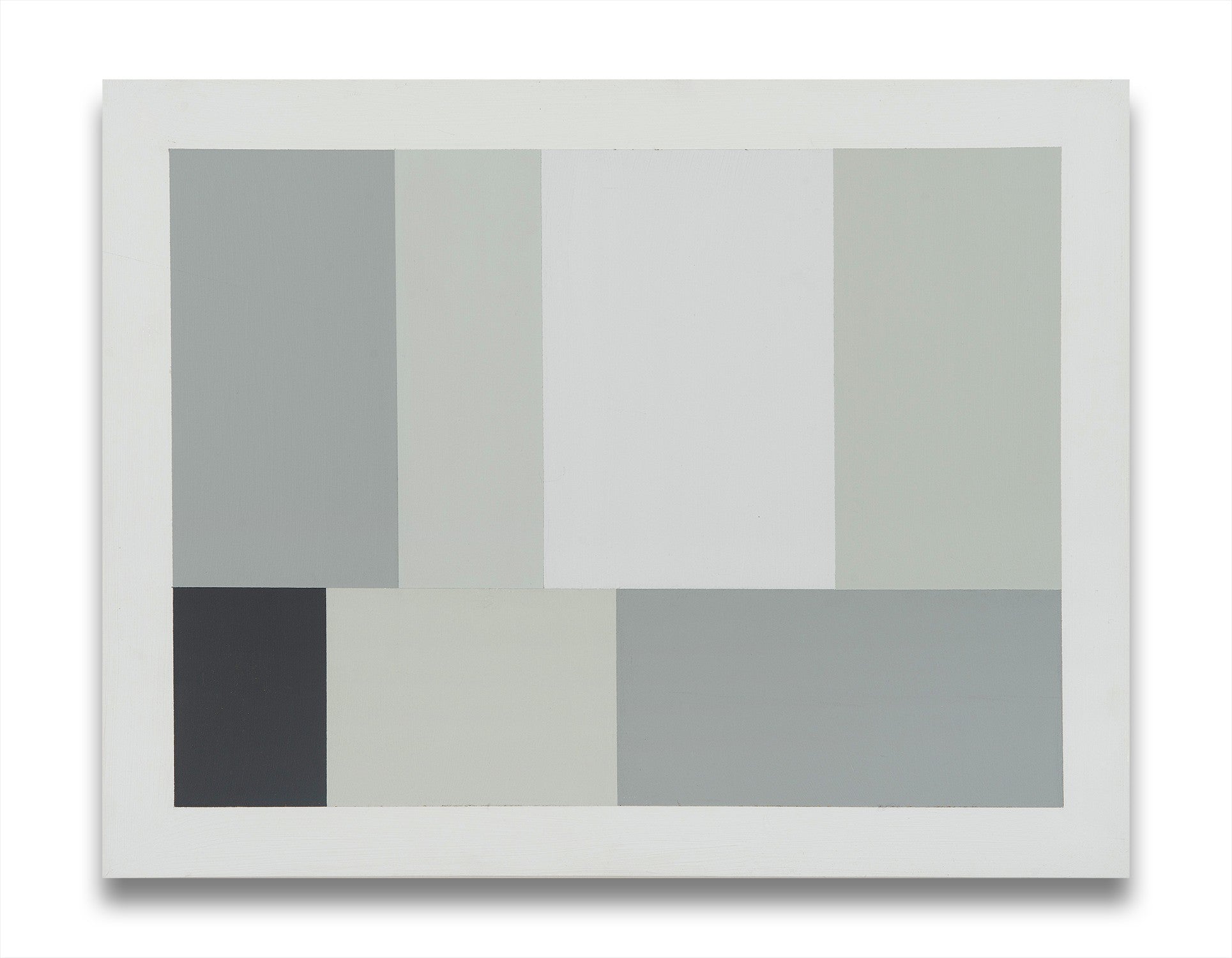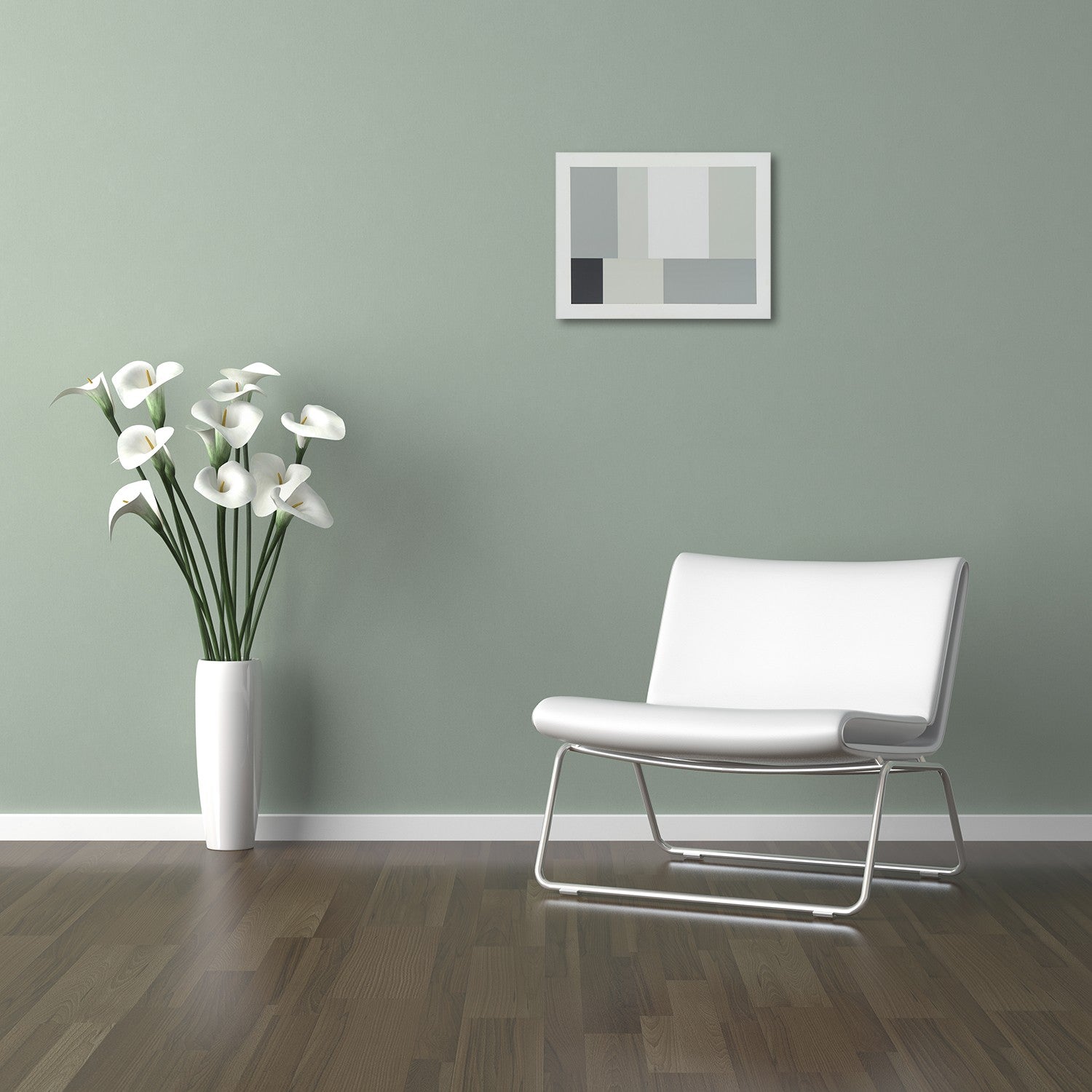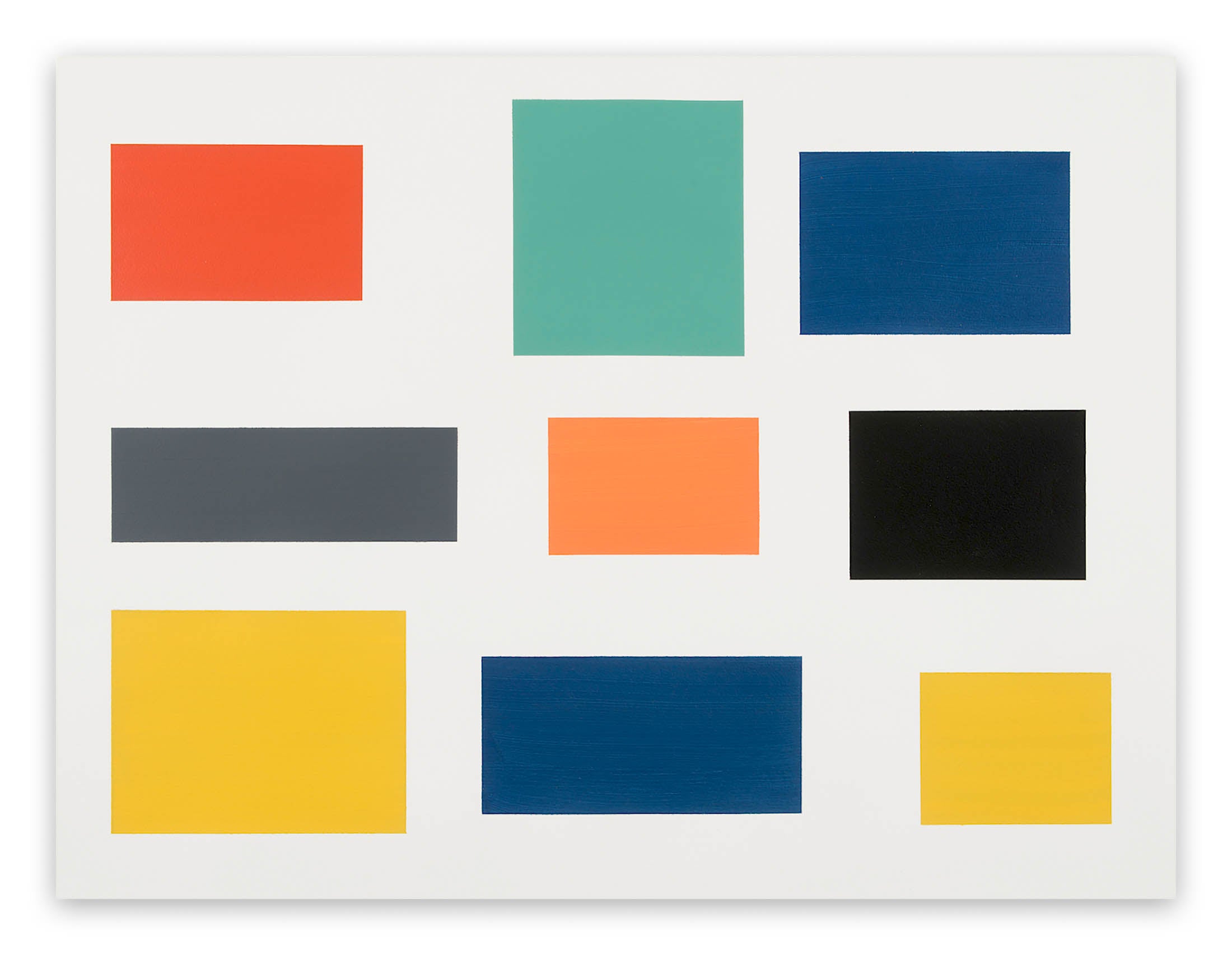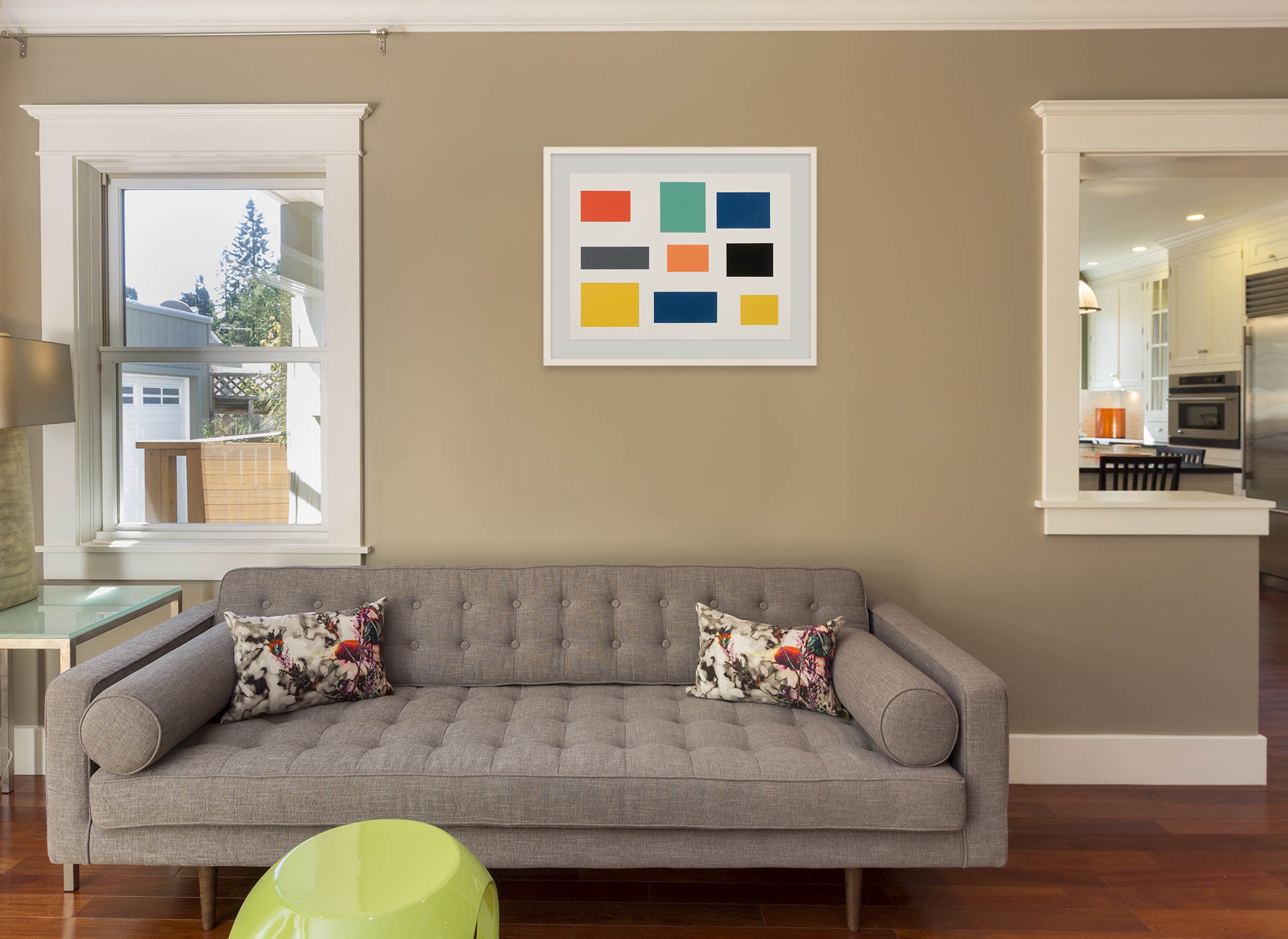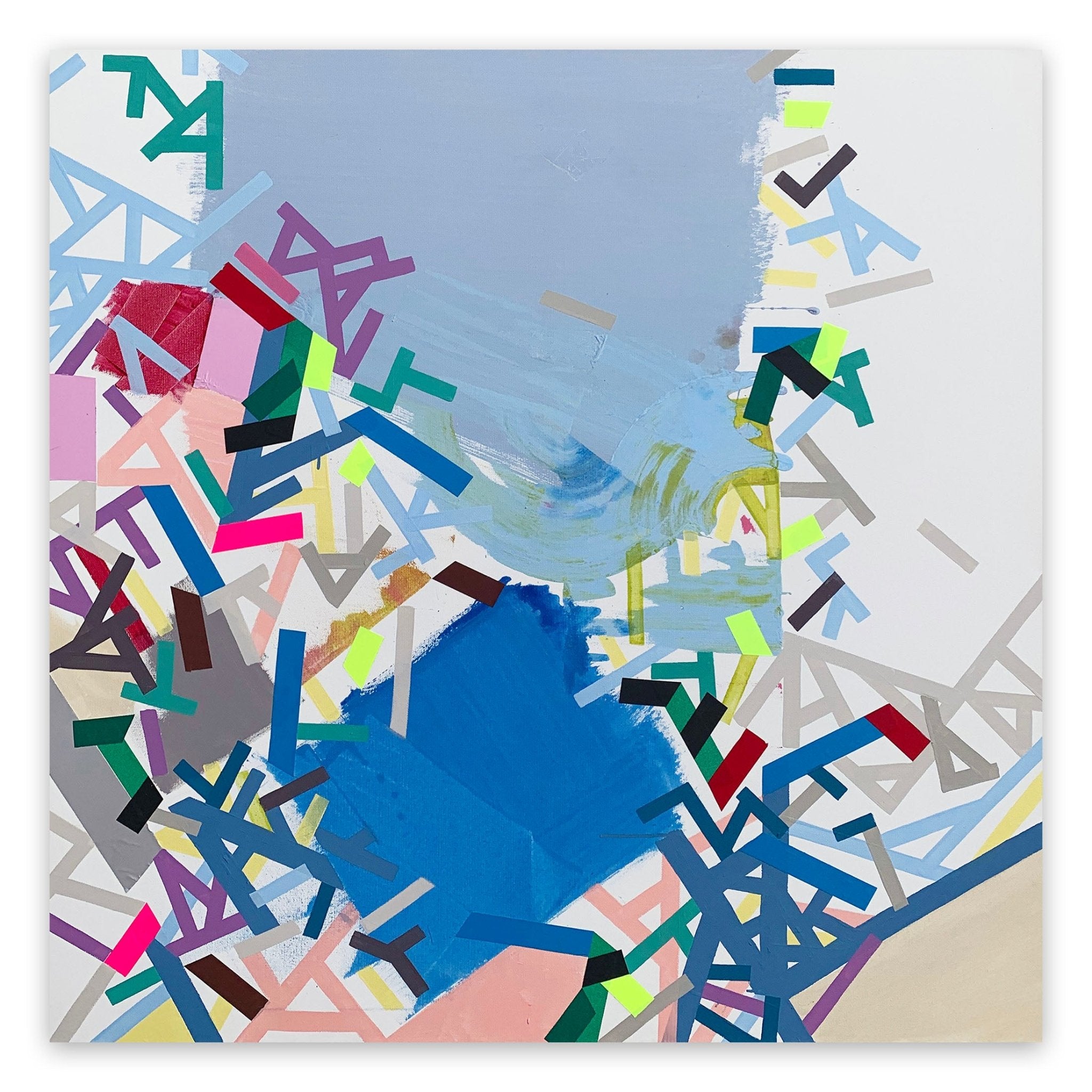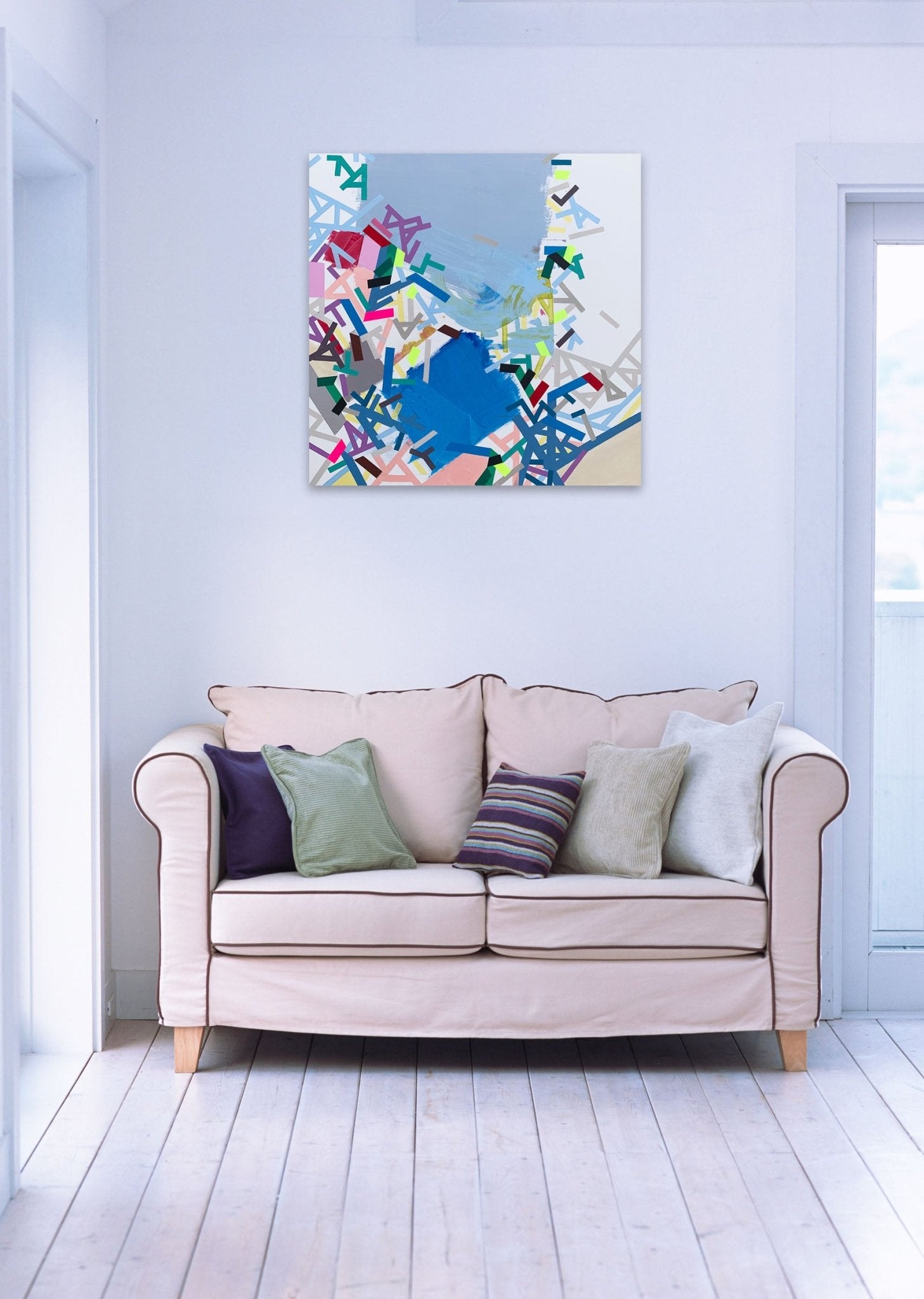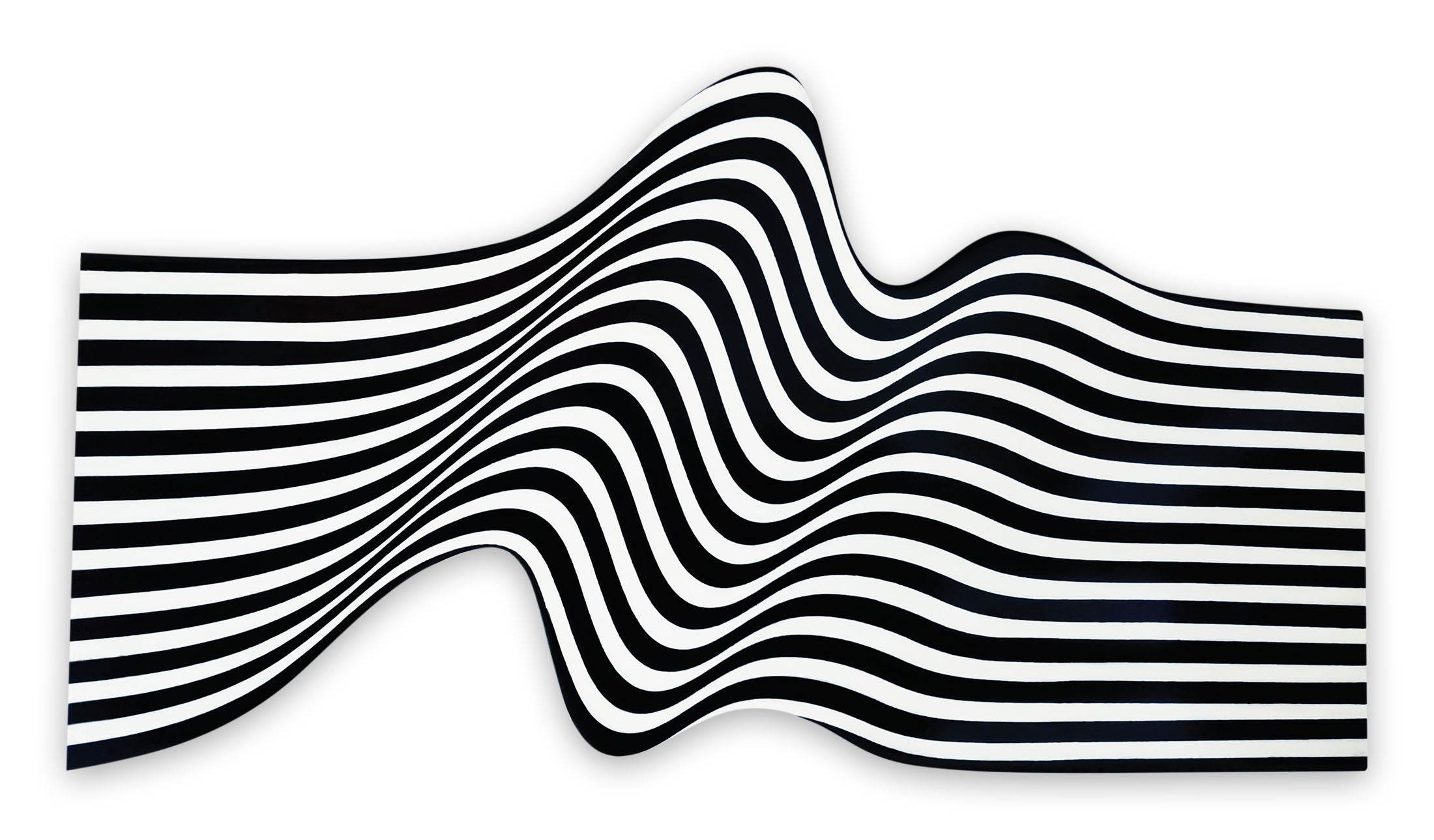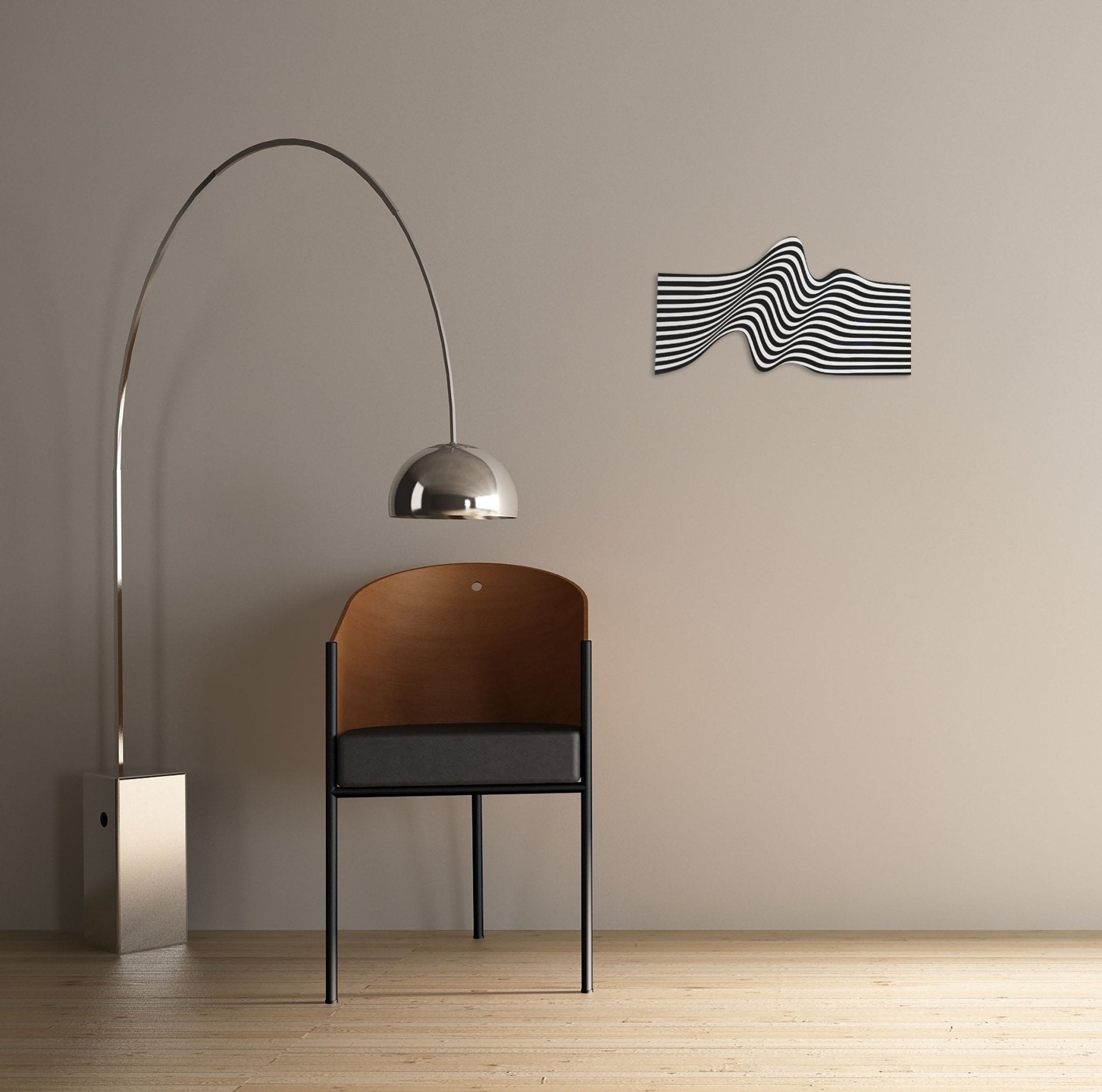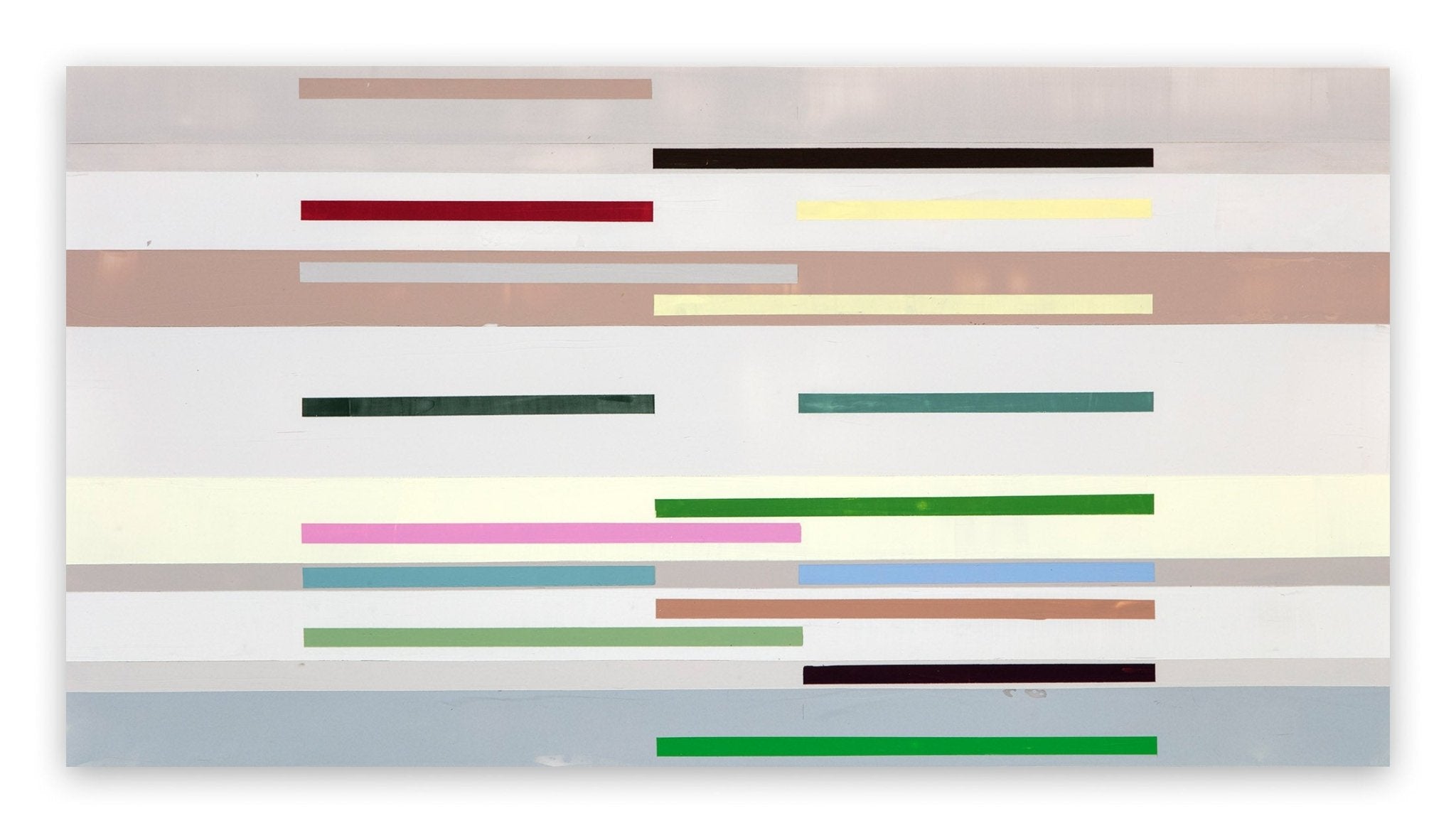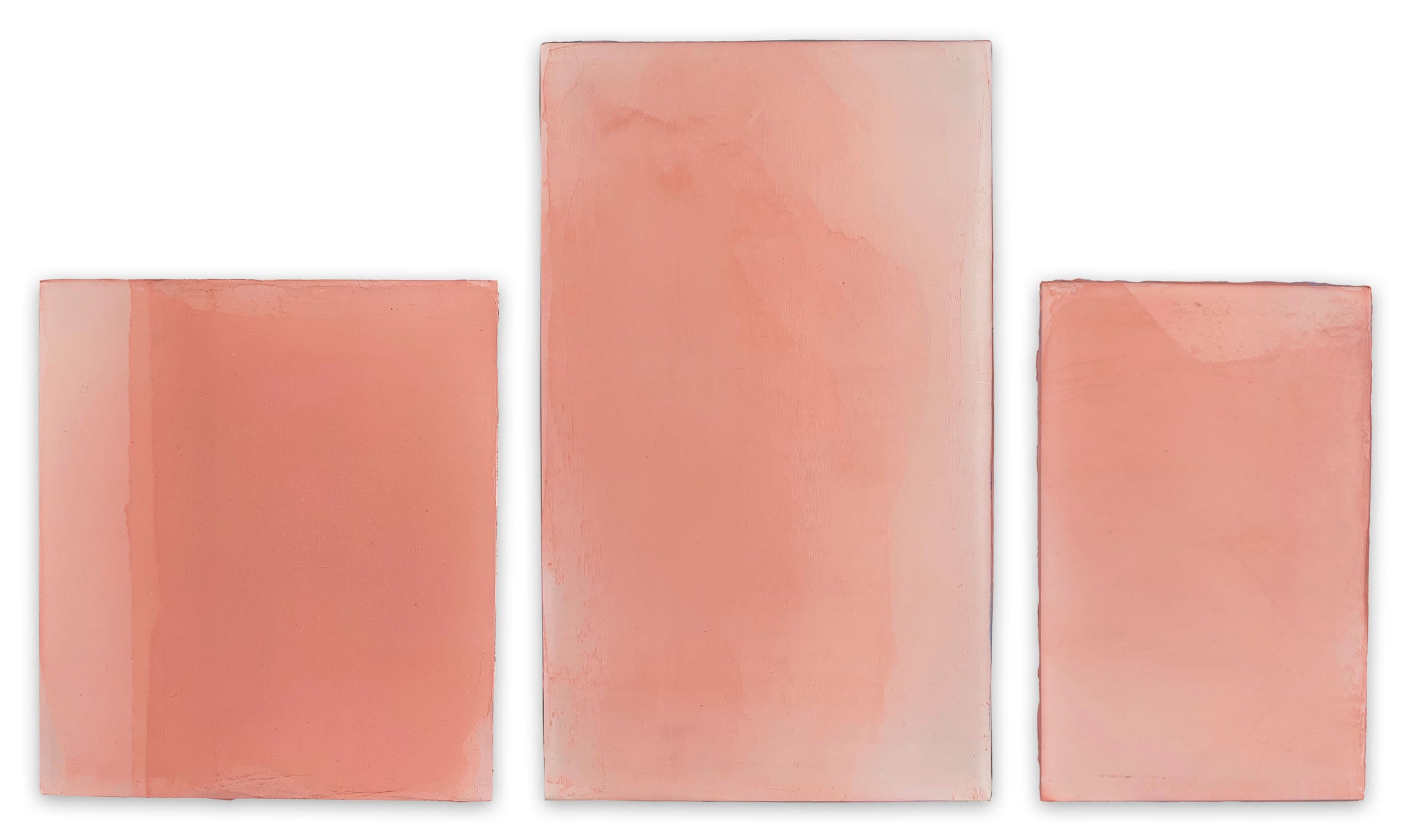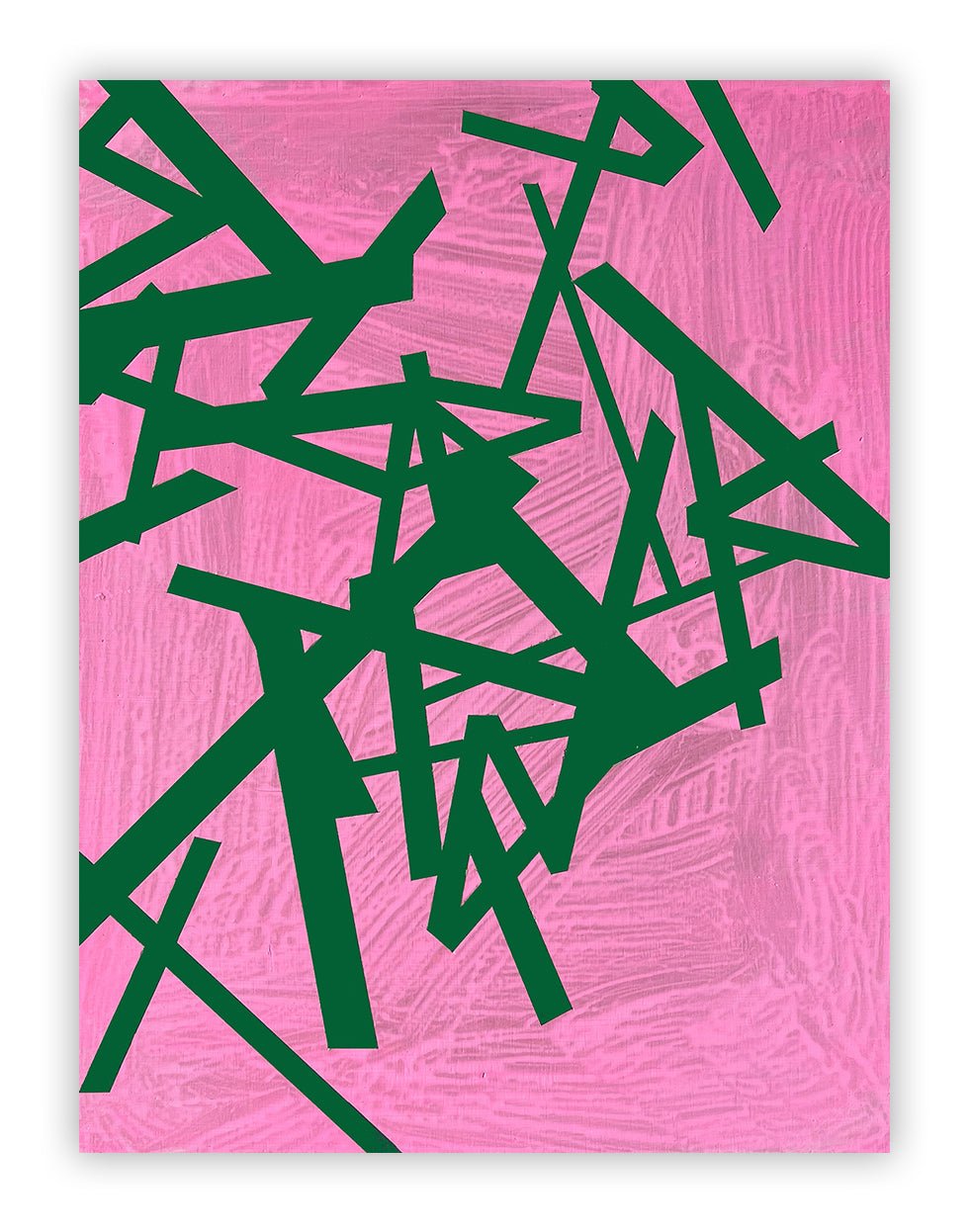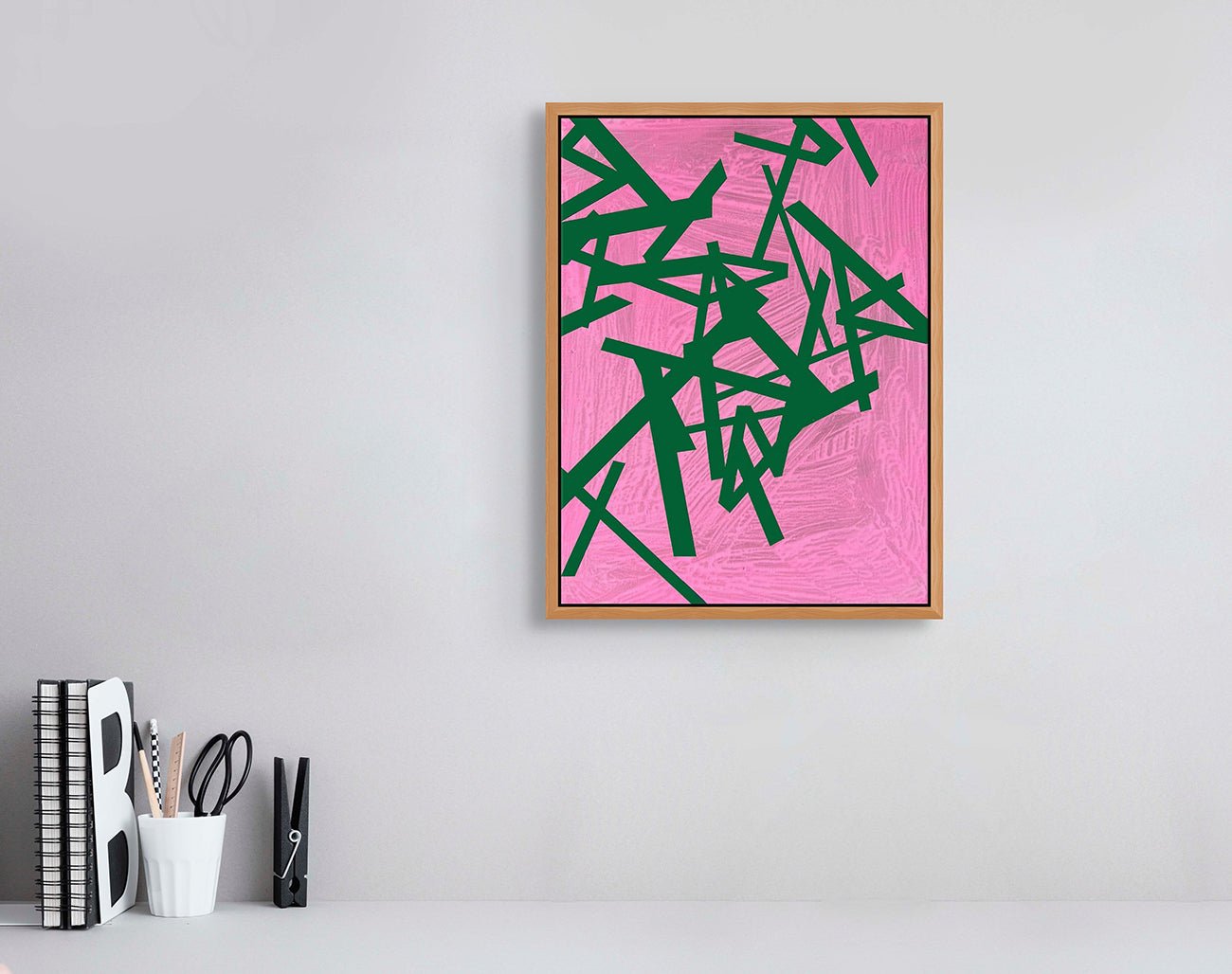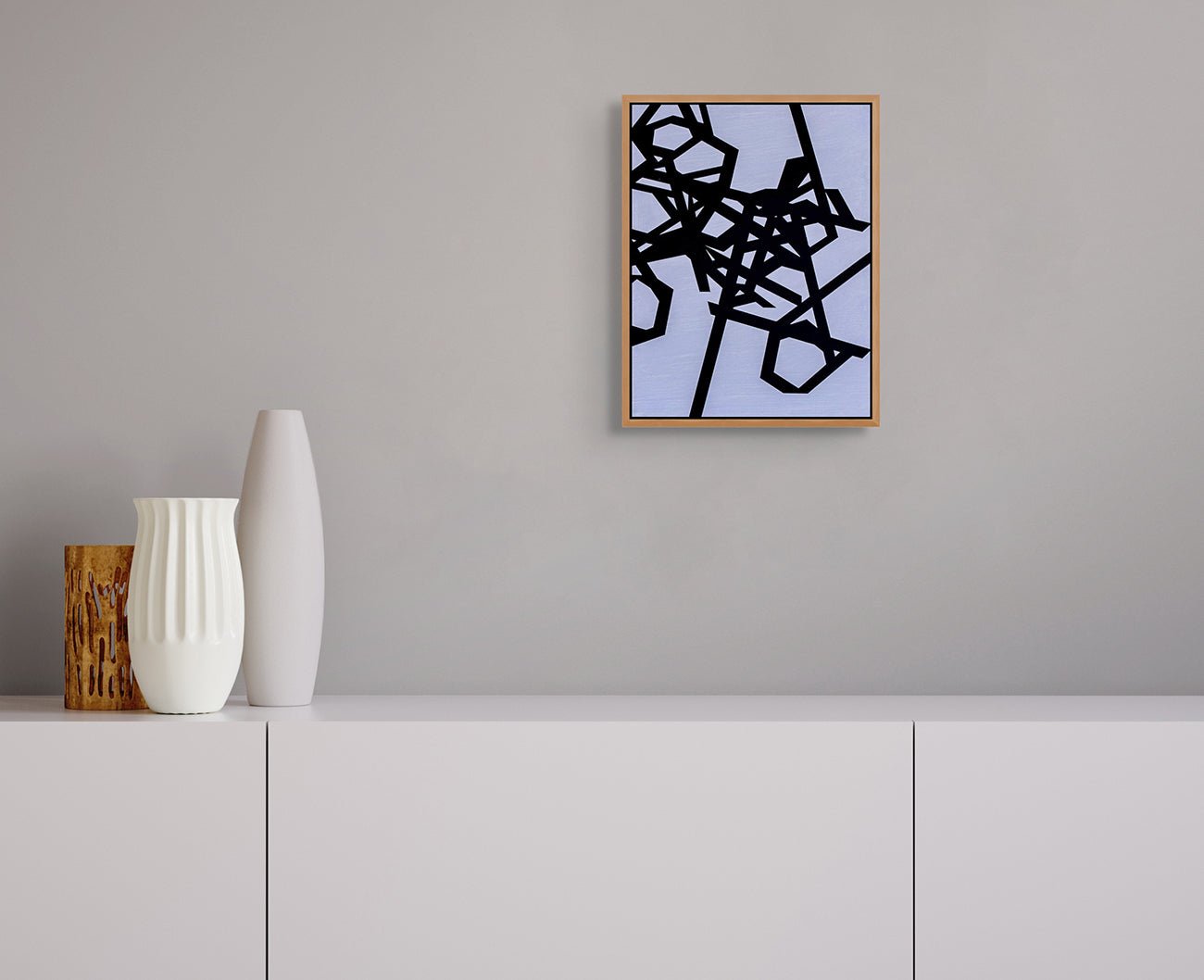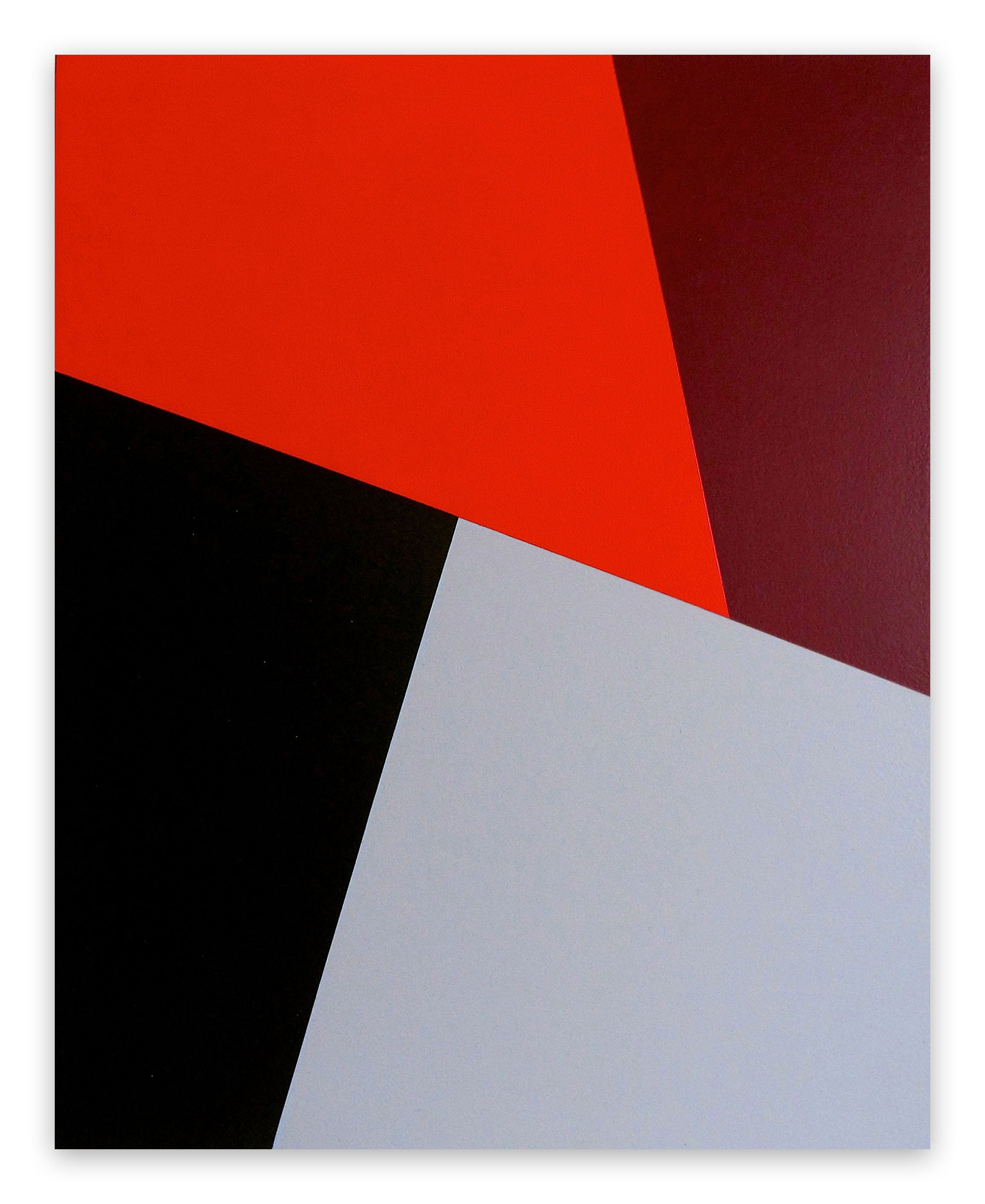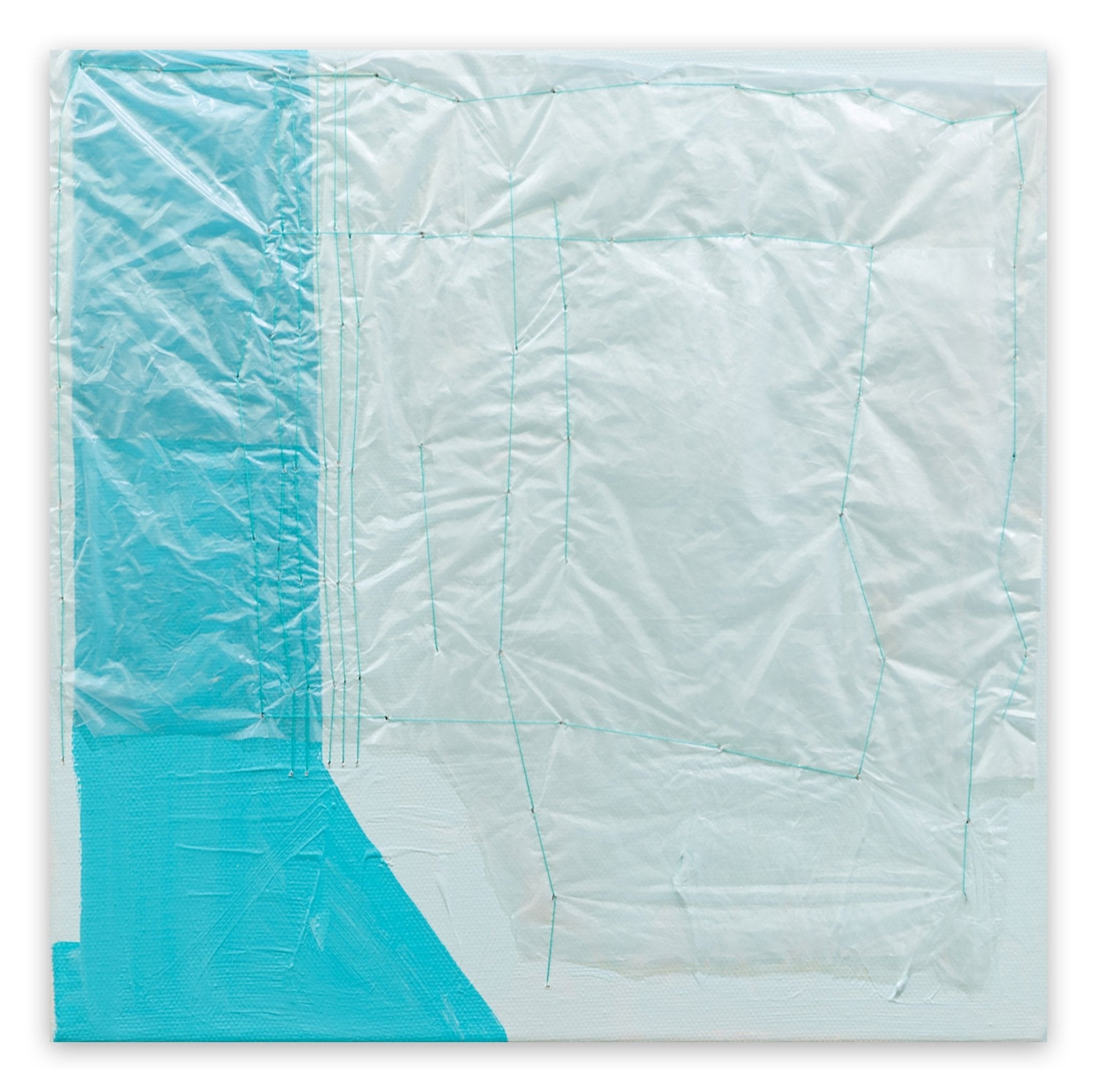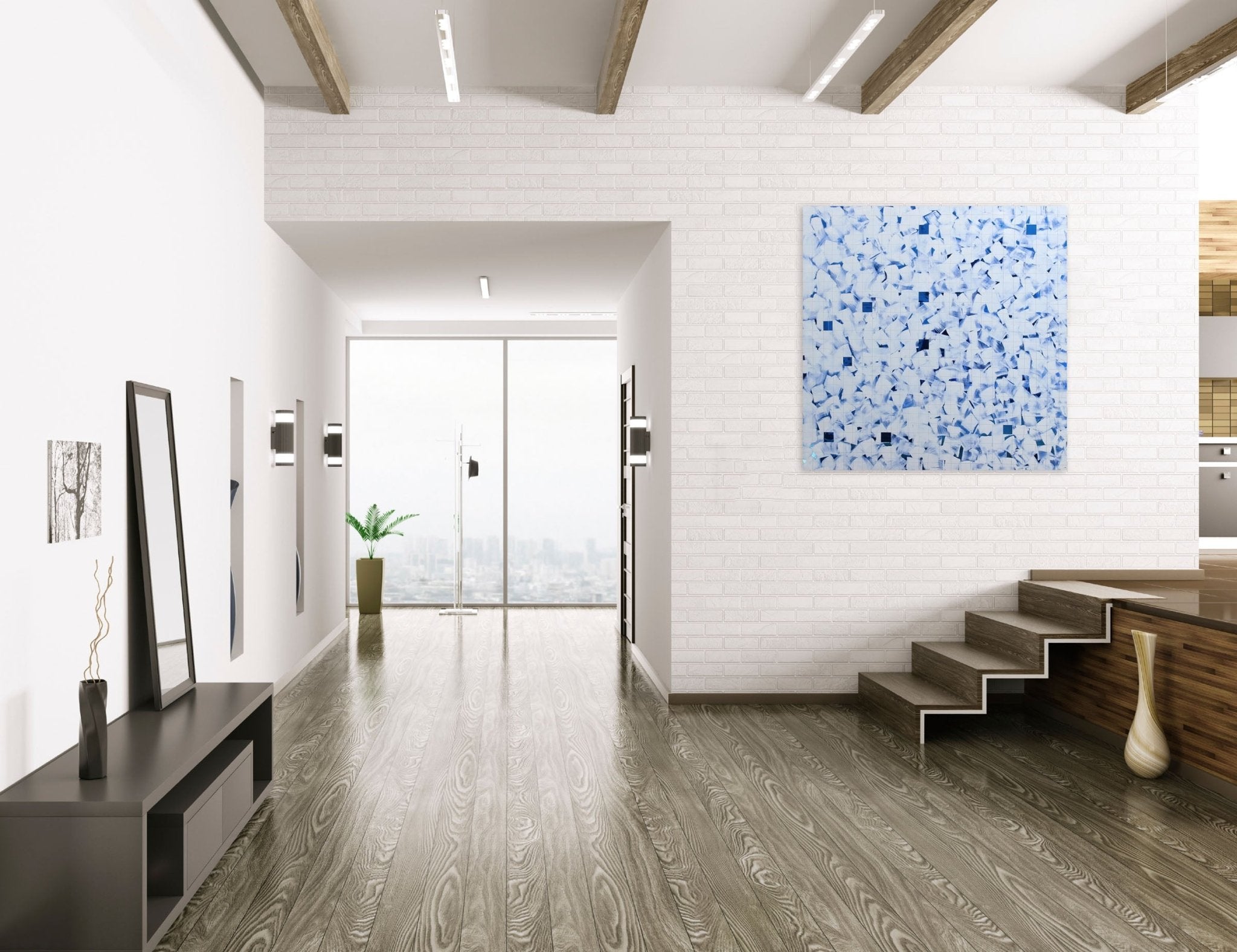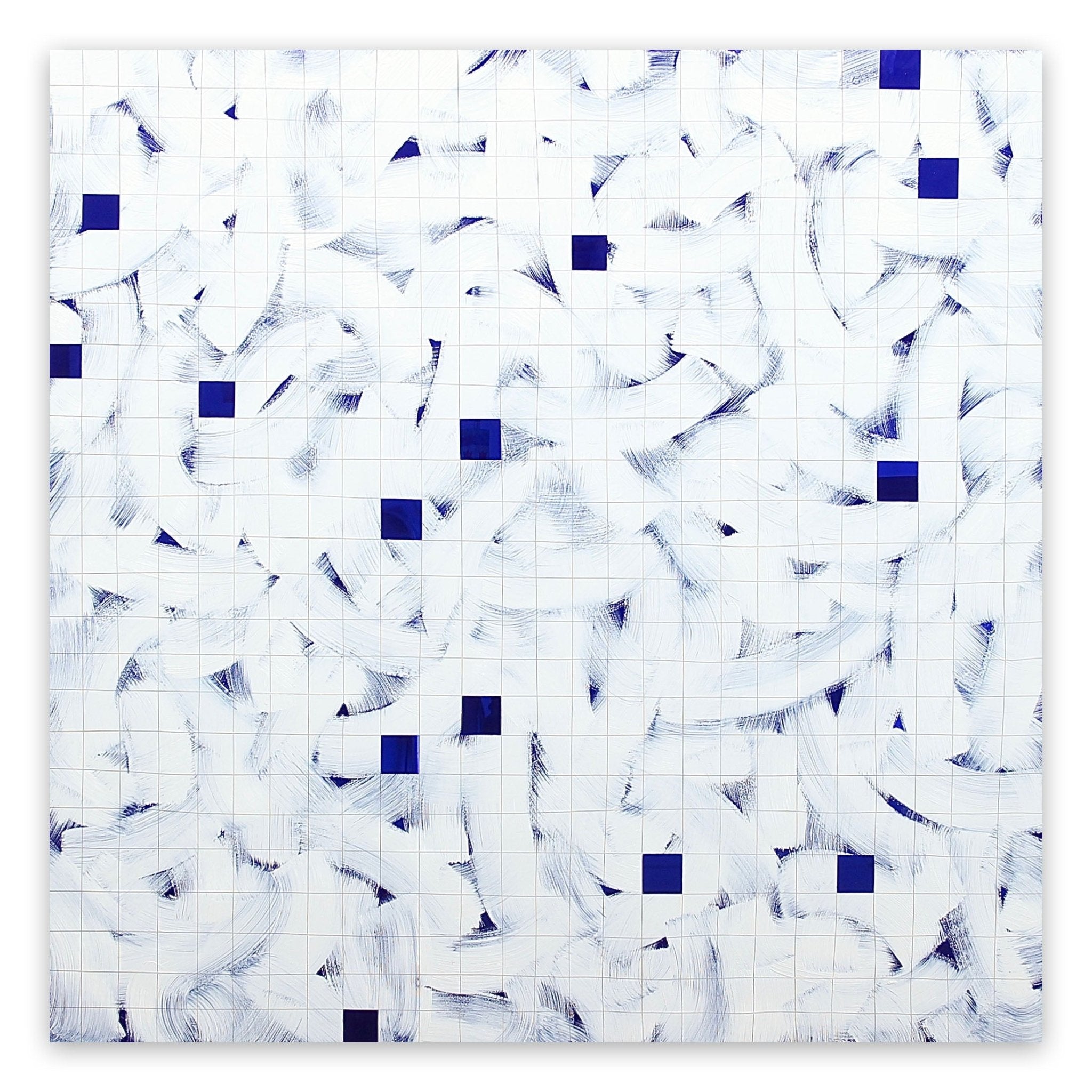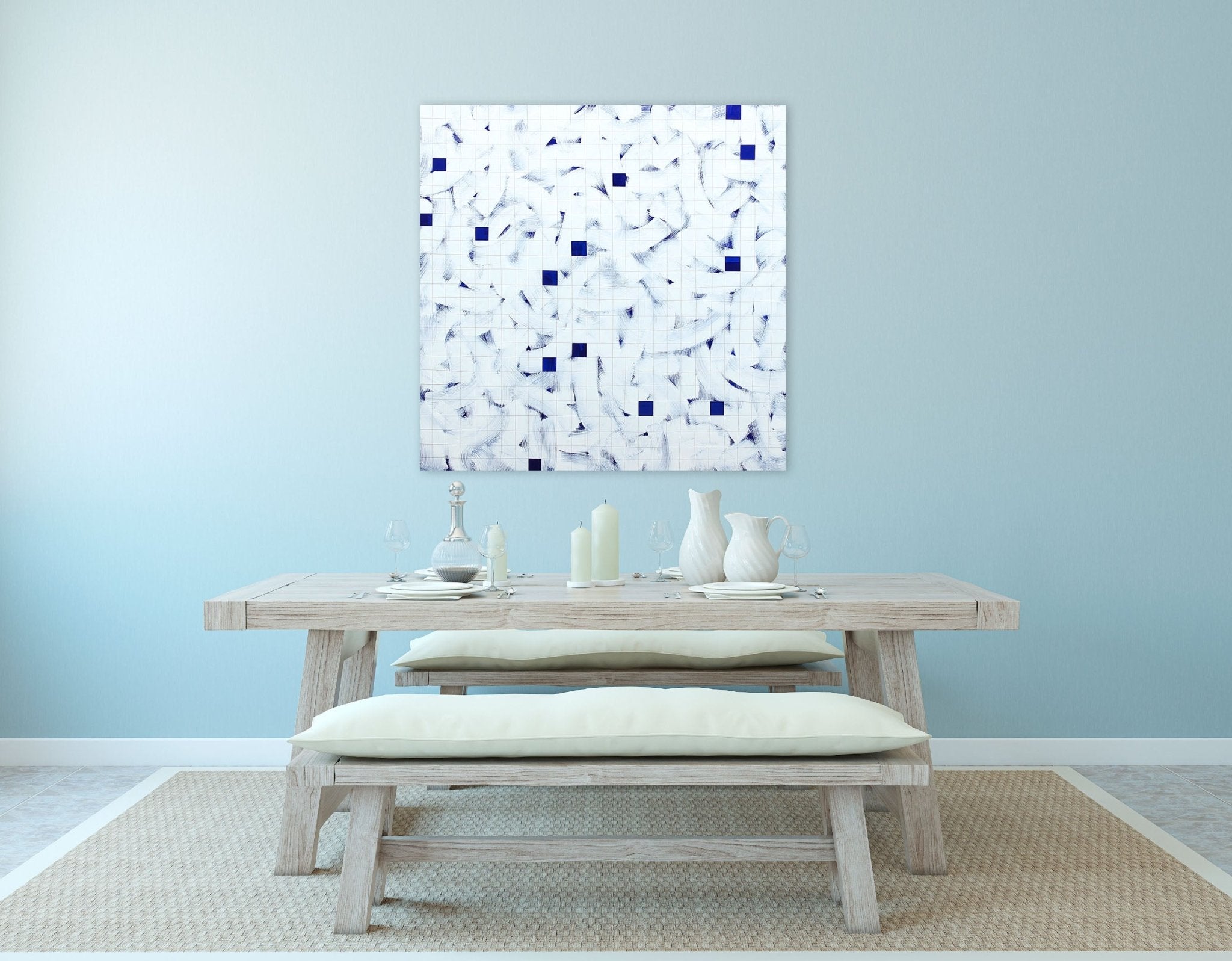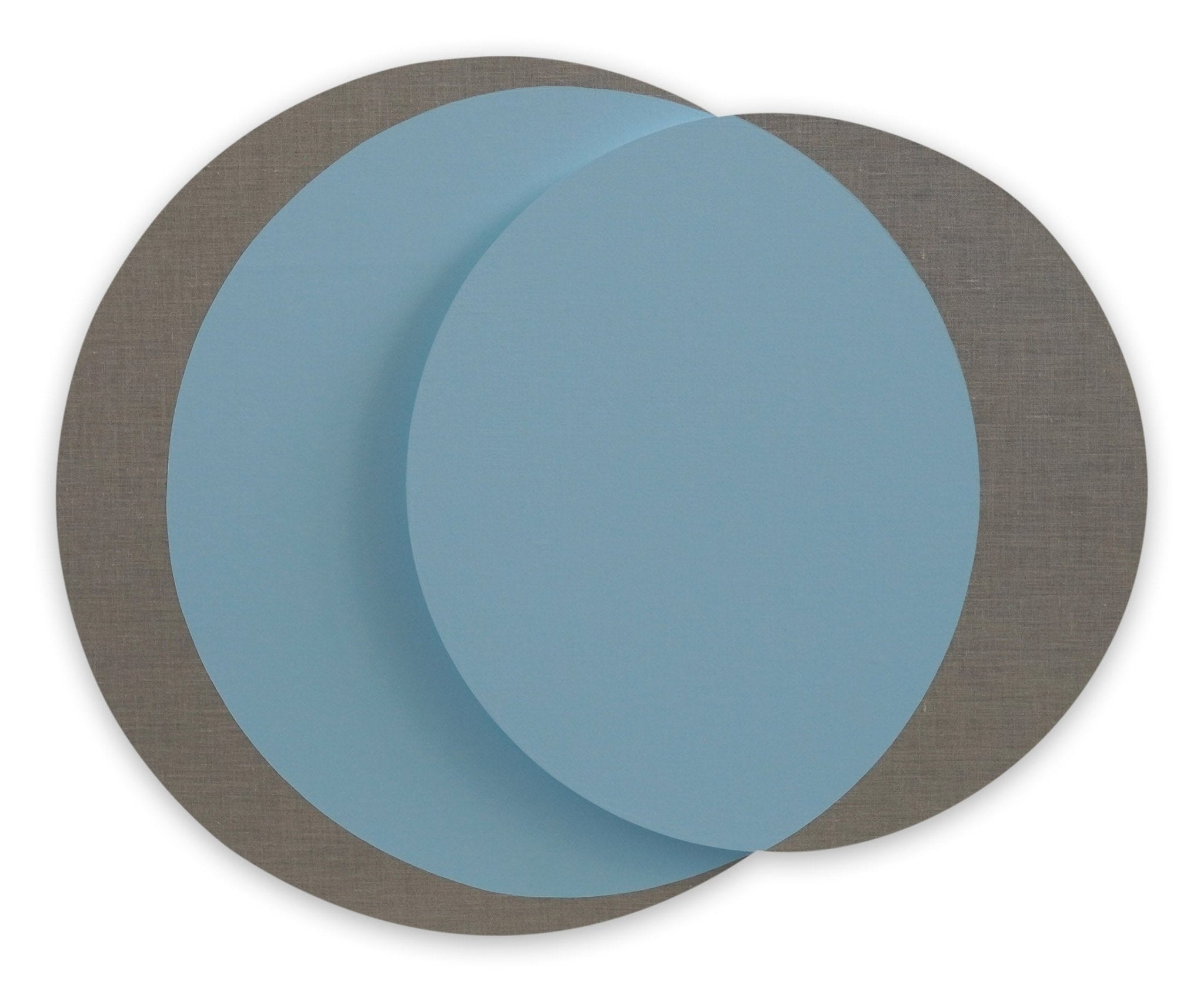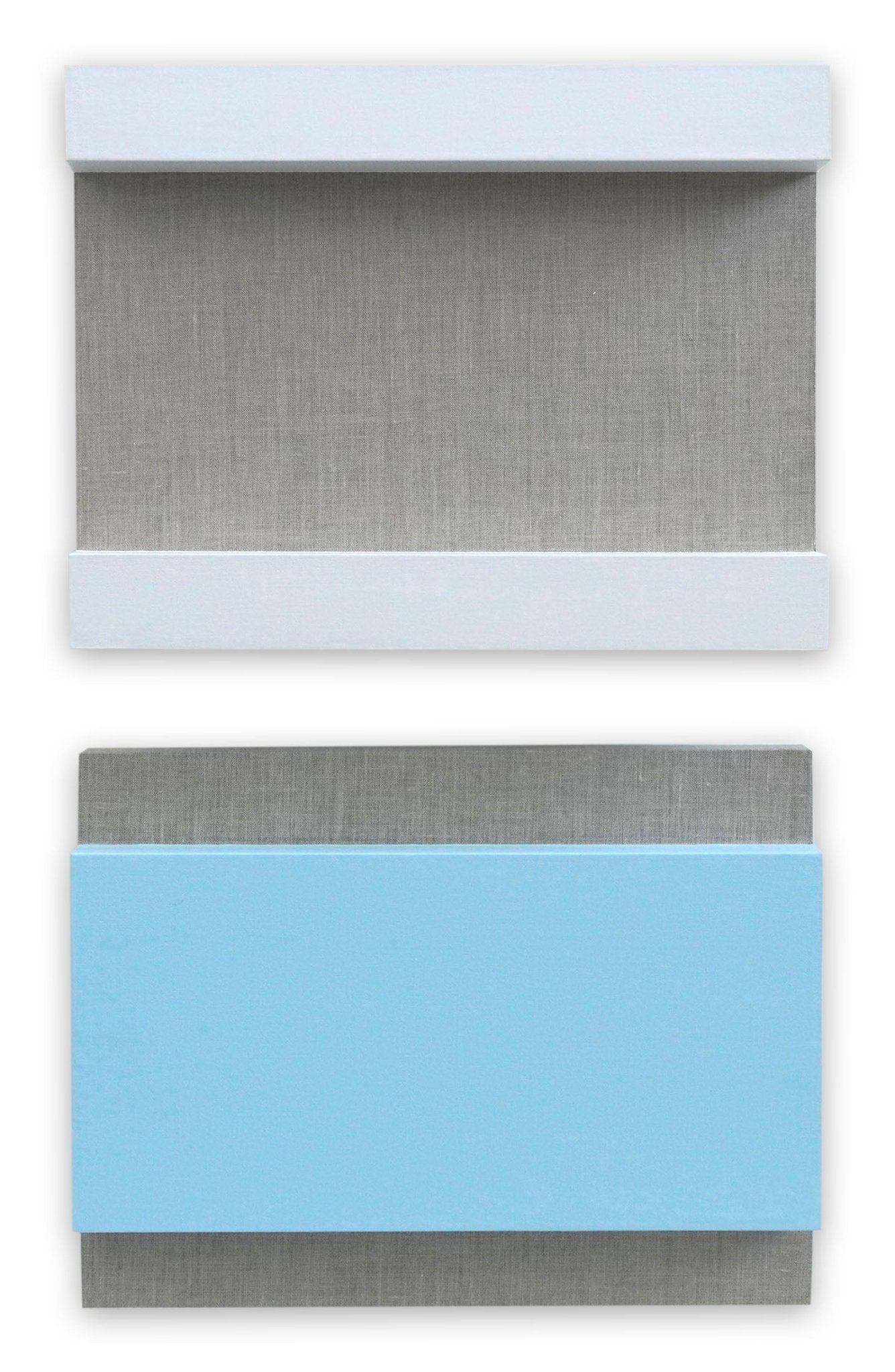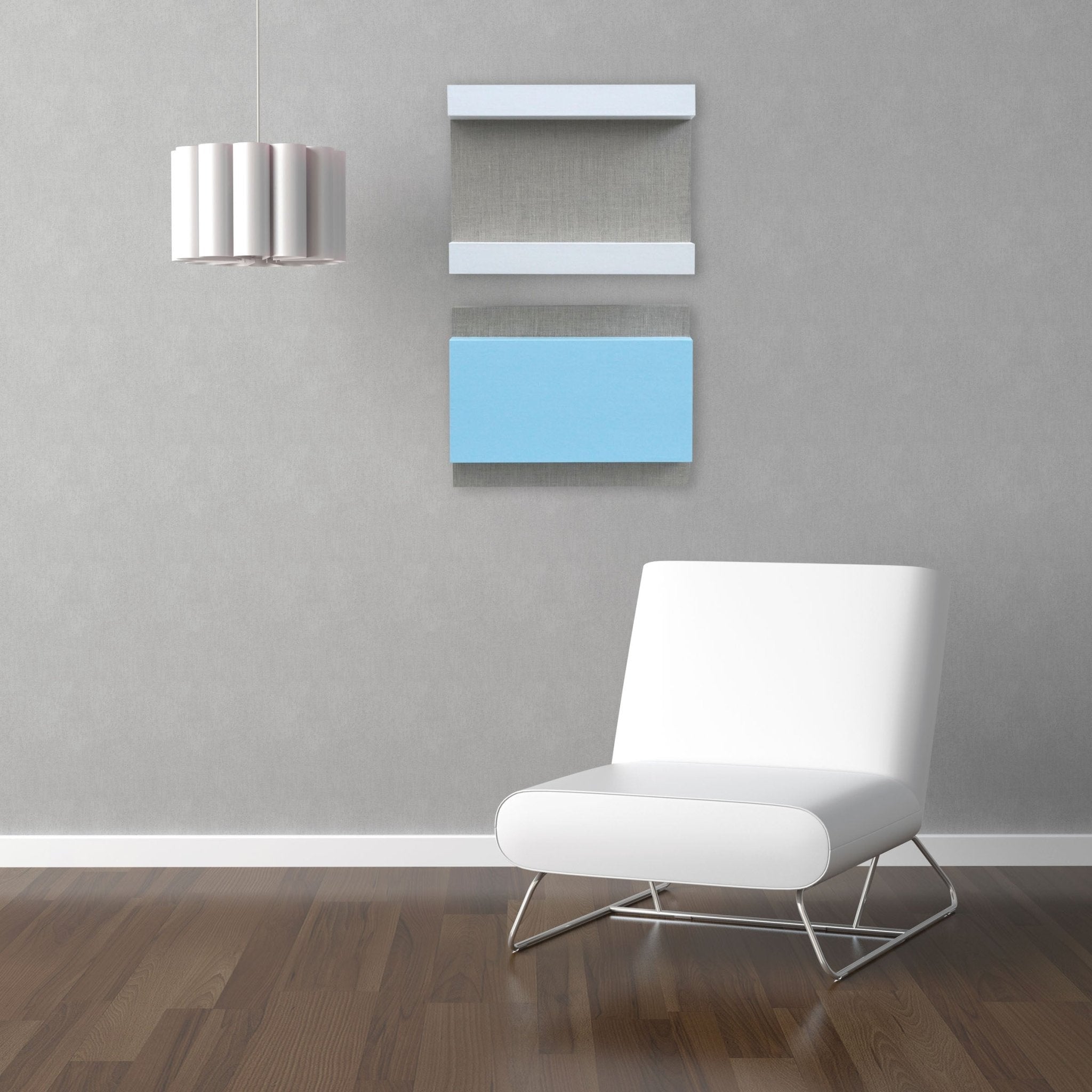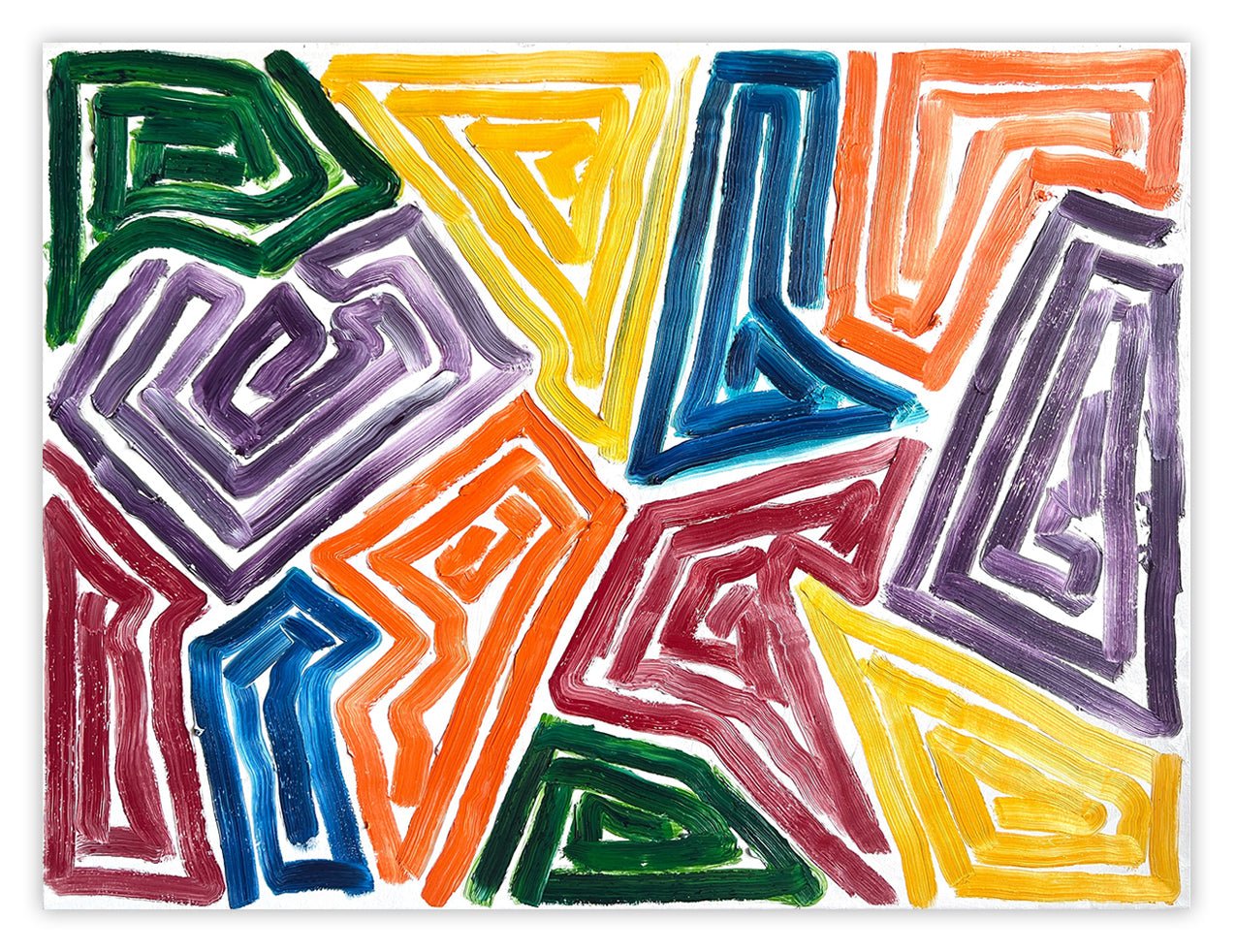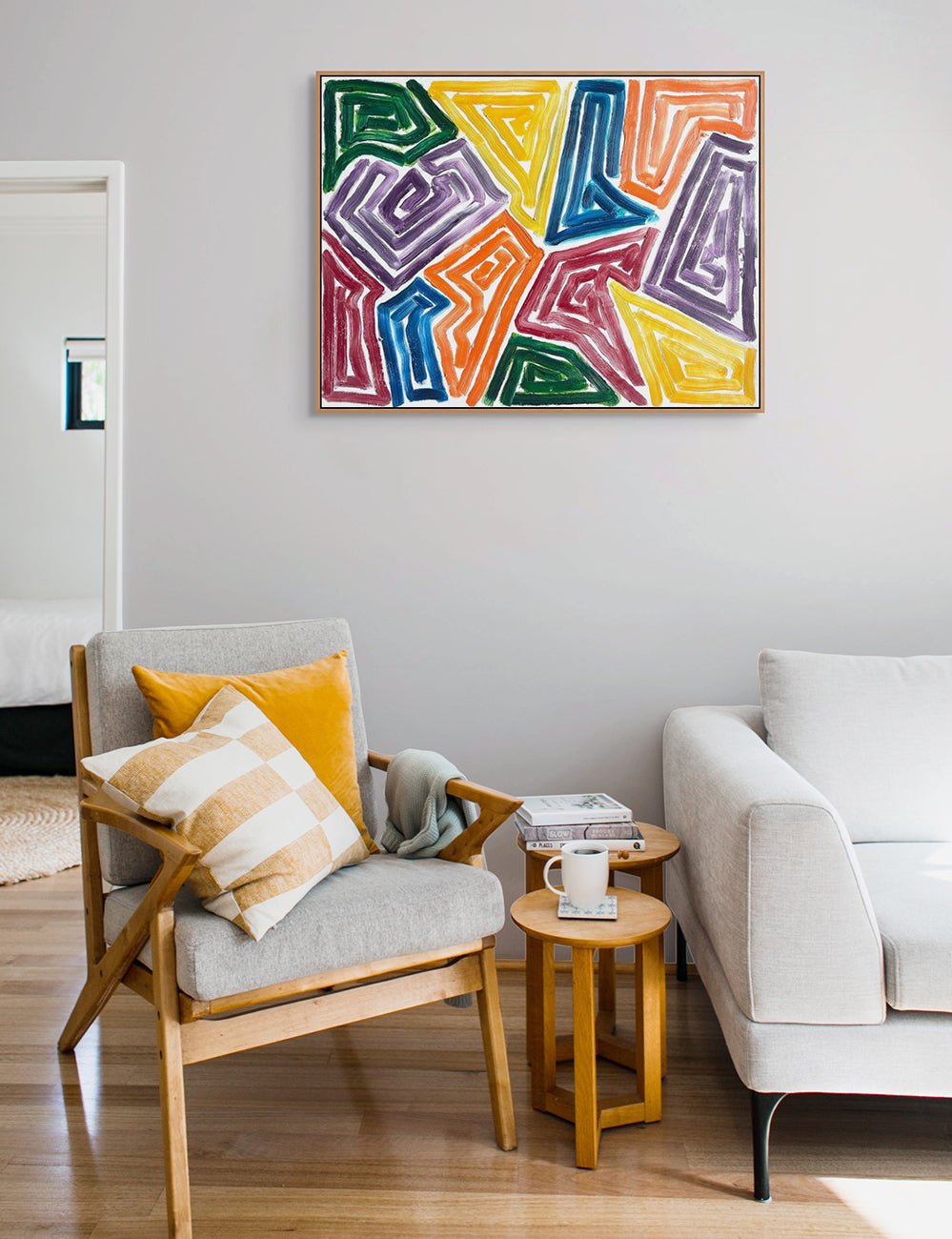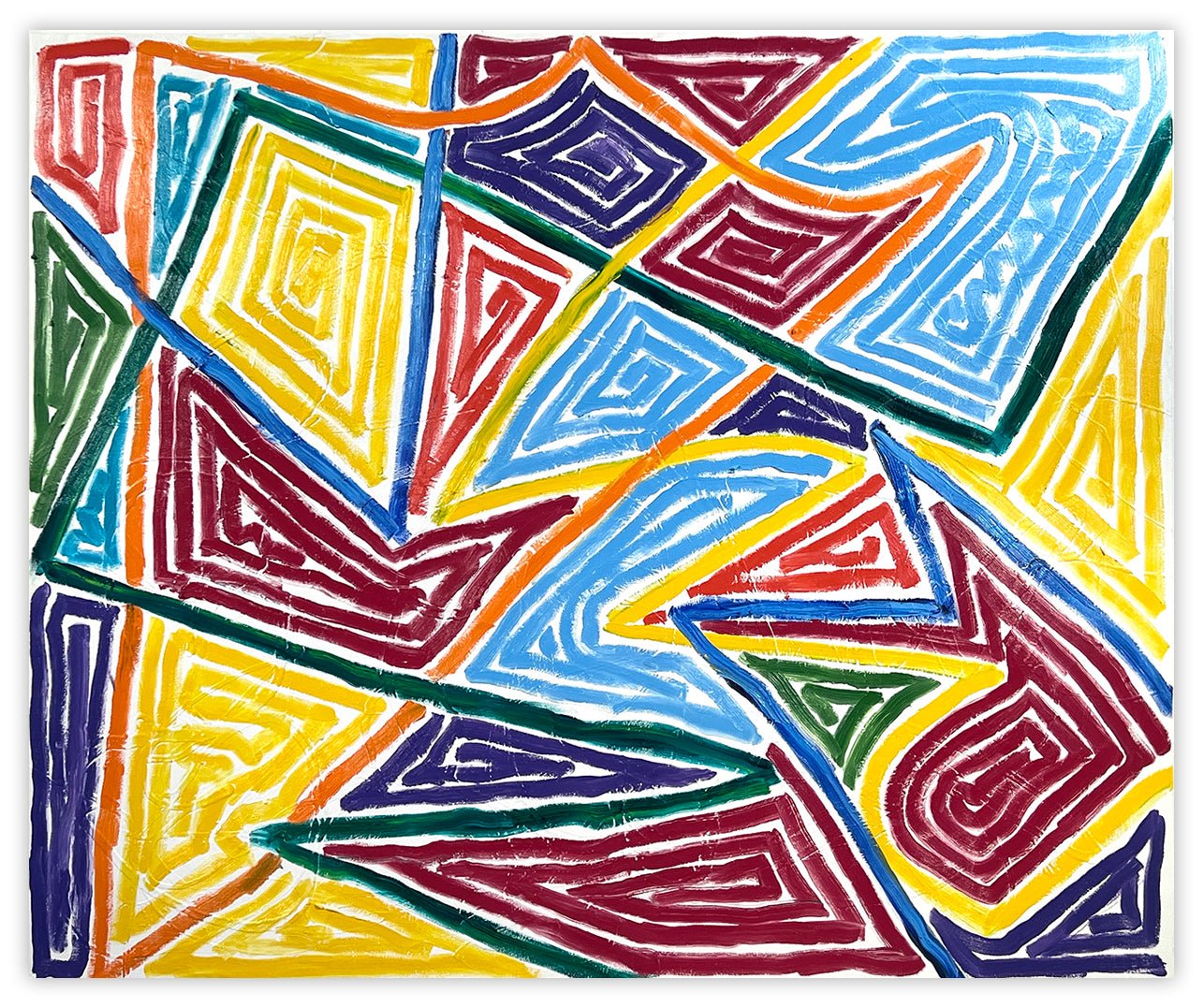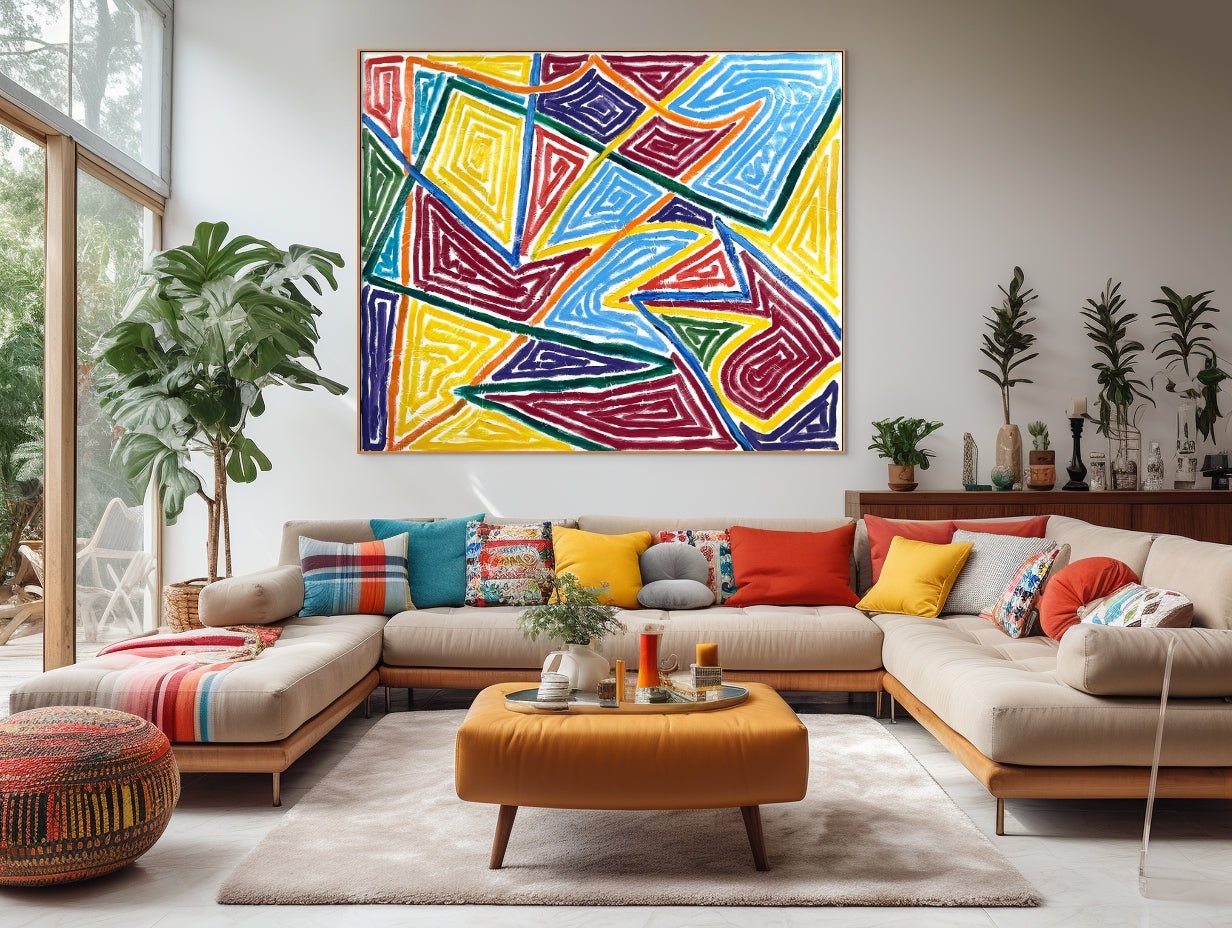文章: Geometric Abstraction: NOT Another Heroic Tale of Malevich and Mondrian
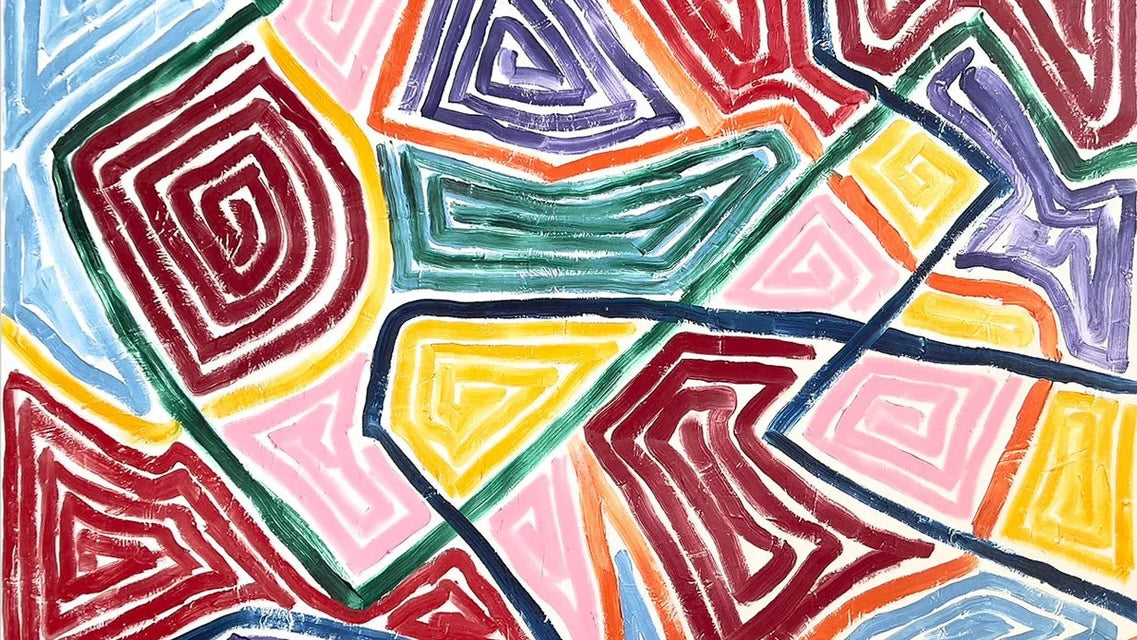
Geometric Abstraction: NOT Another Heroic Tale of Malevich and Mondrian
Why straight lines still matter
Geometric abstraction is one of those art histories everyone thinks they know. A few squares by Malevich, a Mondrian in primary colors, some Op Art that makes your eyes hurt, and then the story supposedly ends. In most museum labels and general books, it appears as a linear, heroic, and somewhat austere narrative: a small group of pioneers make a series of breakthroughs, each one neatly leading to the next, until the chapter closes.
Yet the persistence of straight lines, grids, and coded structures in contemporary painting, sculpture, and digital work suggests something else. Geometry is not a closed chapter; it is a living language that artists keep relearning, contesting, and bending to new purposes. Rather than retelling that linear heroic narrative, this article follows a set of tensions that run through geometric abstraction from the early 20th century to today: spiritual vs. rational, utopian vs. ironic, hand vs. code.
(And for those of you who are strictly here for the basic, and let’s be honest, somewhat boring story of Geometric Abstraction, feel free to scroll straight to the FAQ at the bottom of this page: it covers the textbook version perfectly!)
Spiritual Squares and Non-Objective Faith
At the beginning of the 20th century, geometry was not the clean, secular design tool we think of today. It was deeply weird. For artists like Wassily Kandinsky and Kazimir Malevich, geometry was a vehicle for the occult. Heavily influenced by Theosophy and the idea that "thought forms" could be visible, they saw the triangle and circle not as shapes, but as condensed dramas of forces.
When Malevich painted his Black Square, it wasn’t a formalist exercise; he called it a "bare, frameless icon" for a new religion. The commitment was total: when he died in 1935, a Black Square was mounted on the hood of the truck carrying his coffin, like a regimental flag. This lineage, where the hard edge serves the soft spirit, persists. It isn't about math; it's about breath.

C63 by Elizabeth Gourlay (2022)
We see this legacy in the work of the late Elizabeth Gourlay (1961–2024). Her practice was never about the rigidity of the line but about its resonance. Much like the early pioneers who sought a visual music, Gourlay’s compositions functioned as scores. However, where Malevich sought a radical zero-point, Gourlay found a meditative accumulation, using subtle shifts in color and tone to create a geometry that felt grown rather than built, a "graph of a state of mind" rather than a blueprint.
Utopias in Primary Colors and Concrete Art
A different faith emerged with De Stijl and Constructivism, and later with Concrete Art. Here, the grid was not a window into the soul, but a model for a better society. The defining moment came when Theo van Doesburg published his Manifesto of Concrete Art in 1930, declaring that "nothing is more real than a line, a color, a surface." The idea was radical: an abstract painting abstracts from reality (like a simplified tree), but a concrete painting is its own reality. It doesn't lie.
This quest for an art of absolute clarity, free from the messiness of emotion, created a specific kind of quiet intensity. This atmosphere is palpable at the Musée d’Art Concret in Mouans-Sartoux, a place that we, at IdeelArt, often visit. It reminds us that this specific form of abstraction offers a physical experience of peace, a sanctuary of logic in a chaotic world.
 XXIV 33 212 (Diptych) by Pierre Muckenstürm (2024)
XXIV 33 212 (Diptych) by Pierre Muckenstürm (2024)
That sense of "concrete" stability is central to Pierre Muckensturm. He isn't trying to express a fleeting feeling; he is constructing an object. By organizing his canvases around carefully calibrated intervals and weights, he creates a stillness that feels inevitable. It is a contemporary continuation of the Concrete promise: that a perfectly balanced image can, perhaps, induce a balanced mind.
The Grid, the City, and the Sign
As the century progressed, the grid migrated from a utopian blueprint to something more ambivalent. It began to look like the bars of a prison, or the layout of a spreadsheet. In the 1980s, the Neo-Geo movement, led by artists like Peter Halley, reinterpreted the square not as a spiritual void, but as a "cell"—referencing both biological cells and prison cells, connected by the "conduits" of modern infrastructure.

Large Test Pattern 3 by Tom McGlynn (2002)
The geometric artist today often acts as a decoder of this urban landscape. We are surrounded by instructional graphics, subway maps, and warning signs. Tom McGlynn operates in this vernacular. He treats the visual noise of the city - storefronts, signage, logos - as raw data, stripping away the commercial message to leave only the skeletal syntax of the urban environment.

Enchantment Hurdu by Philippe Halaburda (2020)
Similarly, Philippe Halaburda maps a different kind of territory. His "psychogeographies" look like frantic transit maps or exploded circuit boards, capturing the invisible flows of data and movement that define our lives. Where Mondrian painted the boogie-woogie of the New York grid, contemporary artists paint the overload of the server farm.
Perception: When the Eye Glitches
If early abstraction was serious, the mid-century brought a "hack" to the human operating system: Op Art. When MoMA opened "The Responsive Eye" exhibition in 1965, the reaction was visceral: some visitors actually fainted or reported nausea! The artwork wasn't just sitting there; it was doing things to you. Artists like Bridget Riley proved that a static surface could generate movement, not through magic, but through the physiology of vision.

Mareas by Christina Ghetti (2024)
Contemporary artists have moved away from the aggressive "assault" on the retina toward more subtle vibrations. Cristina Ghetti uses the moiré effect, the interference patterns created by overlapping grids, but slows it down. Instead of the dizzying vertigo of the 60s, her work offers a tactile hum, a visual frequency that invites the viewer to adjust their focus. It’s less about tricking the eye than testing its limits, creating a space where the digital glitch meets the painted canvas.
Geometric Harmonies: The Algorithm Before the Computer
Long before generative AI, geometric artists were using algorithms. Sol LeWitt famously wrote, "The idea becomes a machine that makes the art." The artist’s job was to write the code (the rules); the execution was secondary. This connects to the Oulipo group in literature: writers who believed that strict constraints (like writing a novel without the letter 'e') forced greater creativity.

Dawn Light Skew 2 by Debra Ramsay (2023)
Today, this "algorithmic" approach is standard, whether the computer is involved or not. Debra Ramsay acts as a human data-logger. She tracks changes in natural environments - the shifting colors of a specific tree over a year - and translates that data into rigorous systems of lines. The result is a painting that looks abstract but is actually a specific dataset of time and light.

Untitled 2023 (Black-Purple) (Left) & Untitled 2023 (Red-White) by Jasper van der Graaf (2023)
We see a similar rigor in Jasper van der Graaf, whose work deconstructs the very notion of the pattern. By shifting and recombining geometric modules, he creates a visual rhythm that feels like a language we almost understand. It is the beauty of the system: the satisfaction of seeing the math work out, even if the equation remains hidden.
Rigor and Mischief: Breaking the Grid
There is a misconception that geometric art is humorless. But there is a long tradition of "eccentric abstraction." Think of François Morellet, who determined the curves of his paintings using the digits of Pi, or Heimo Zobernig, who uses the grid with a deliberate, ironic sloppiness. Geometry can be a game, a way to set up a rule just for the pleasure of breaking it.

12 Shapes by Dana Gordon (2024)
Dana Gordon Dana Gordon operates in this zone of organized exuberance. His paintings are built from dense, rhythmic clusters of shapes that suggest a grid without being trapped by it. It is a form of geometric improvisation—much like jazz—where the structure provides a beat, but the color and mark-making are free to riff and wander. The result is a "loose geometry" that feels alive and consistently playful rather than calculated.

Red Frames by Daniel Göttin (2019, Amsterdam, Permanent Installation)
In the three-dimensional realm, Daniel Göttin takes this playfulness into the real world. He uses industrial materials, tape, wood, metal, to intervene in architectural spaces. He follows strict rules, but the outcome is determined by the irregularities of the room: a vent, a corner, a window. It’s a dialogue between the platonic ideal of the square and the messy reality of the exhibition wall.
Beyond the Flat Surface: Violent Geometry
"What you see is what you see," said Frank Stella, insisting that a painting is just an object, not a window. This led artists to break the rectangle entirely. Contemporary artist Angela de la Cruz famously takes the geometric monochrome and breaks the stretcher bars, crumpling the painting into a sculptural wreck.

Shield #2 by Holly Miller (2020)
While less violent, many artists today are equally committed to the idea that geometry must escape the flat plane. Holly Miller replaces the painted line with physical thread, stitching directly through the canvas. The "line" is no longer a representation; it is a physical tension that casts a real shadow.

Brand New Day by Tom Henderson (2018)
Similarly, Tom Henderson moves into the realm of industrial finish, using Plexiglas and oil to create wall sculptures that trap light and reflection, changing as the viewer moves. And Louise Blyton challenges the standard four corners of painting with her shaped canvases and raw linen, softening the hard edge through the texture of natural material. They remind us that geometry is not just a mental concept; it is a thing in the world, with weight, texture, and consequence.

Inside and Outside by Louise Blyton (2020)
Conclusion: Living with Systems
We live surrounded by geometries we did not choose: urban plans, interfaces, logistical networks. Geometric abstraction does not simply mirror these systems; it offers a space to examine them, slow them down, or imagine alternatives.
Whether through the meditative scores of Elizabeth Gourlay or the urban decoding of Tom McGlynn, these artists prove that geometry is not a cage. It is a language. And the challenge now is not to repeat the canon, but to see how these forms can still speak in a world where geometry has become both our habitat and our constraint.
By Francis Berthomier
All images © the artists, represented by IdeelArt
Featured Image: Message by Dana Gordon (2023, detail)
Frequently Asked Questions
1. What is geometric abstraction in art?
Geometric abstraction is a form of non-objective art that uses basic geometric shapes - squares, rectangles, circles, triangles, and grids - as its primary visual language. Unlike figurative art, which depicts recognizable objects, geometric abstraction focuses on the interaction between form, color, and space. It is often characterized by hard-edged painting techniques, clear lines, and a rejection of illusionistic depth. The goal is often to achieve a sense of purity, logic, or spiritual order through composition alone.
2. How is geometric abstraction different from other types of abstract art?
While "abstract art" is the umbrella term, geometric abstraction is a specific branch defined by structure and control. It stands in contrast to Lyrical Abstraction or Abstract Expressionism, which prioritize gestural brushstrokes, spontaneity, and emotional messiness. If you see dripping paint and chaotic motion, it is likely expressionist; if you see clean lines, solid colors, and a sense of architectural balance, it is likely geometric. It is the difference between a shout and a mathematical equation.
3. When did geometric abstraction begin?
The movement emerged in the early 20th century (circa 1910s–1920s) as a radical break from the past. It developed simultaneously across Europe: through Suprematism and Constructivism in Russia (led by Malevich and Lissitzky) and De Stijl in the Netherlands (Mondrian and van Doesburg). These pioneers weren't just changing art styles; they believed that pure, geometric forms could create a universal language and even structure a new, utopian society.
4. Who are the most important geometric abstraction artists?
The historical canon is dominated by Kazimir Malevich, Piet Mondrian, Theo van Doesburg, and later, Josef Albers and Max Bill. However, the history is currently being rewritten to include overlooked female pioneers like Hilma af Klint, Marlow Moss, and Carmen Herrera. Today, the tradition is kept alive by contemporary artists who continue to expand the boundaries of the genre, many of whom are featured in the IdeelArt collection.
5. What are the main characteristics of geometric abstract art?
To identify this style, look for:
- Vocabulary: A reliance on basic geometry (circles, squares, triangles) and grids.
- Technique: Hard-edge application of paint where colors meet abruptly without blending.
- Composition: A strong emphasis on asymmetry, balance, and proportion.
- Subject: A complete lack of narrative or representation (it is "non-objective").
- Color: The use of flat planes of color, often exploring interaction and vibration rather than description.
6. Why do artists use geometric shapes in abstract art?
Geometry offers a way to bypass the "storytelling" of traditional art and access something more fundamental. For pioneers like Kandinsky, geometry had a spiritual resonance: a triangle caused a different "vibration" in the soul than a circle. For others, like the Concrete artists, geometry provides a rational framework to explore human perception and color theory without distraction. In our modern era, the geometry of the screen and the pixel makes this language more relevant than ever.
7. How did movements like Constructivism and De Stijl influence the genre?
These movements turned geometry into a philosophy. De Stijl (The Style) aimed for ultimate harmony by reducing art to vertical/horizontal lines and primary colors. Constructivism went further, treating the artist as an engineer and the artwork as a construction for social change. They moved geometric art out of the frame and into architecture, design, and typography, establishing the "visual code" of the 20th century.
8. What is the difference between geometric abstraction and lyrical abstraction?
It is a battle between the "Head" and the "Heart." Geometric abstraction is generally associated with the rational, the planned, and the structural (the Head). Lyrical abstraction is associated with the intuitive, the organic, and the emotional (the Heart). However, many contemporary artists, such as Dana Gordon, mentionned in the above article, blur these lines, using rigid geometric grids to create soft, poetic, or "lyrical" visual effects.
9. How does color theory influence geometric abstract painting?
In geometric art, color is not decoration; it is structure. Without a subject to distract the eye, the interaction of color becomes the subject. Artists often rely on the theories of Josef Albers (author of Interaction of Color), experimenting with how adjacent colors can push each other forward or backward, create vibration, or change perceived temperature. The geometry serves as the "petri dish" for these optical experiments.
10. What materials are used in geometric abstract art?
While oil and acrylic on canvas remain standard, the quest for the "perfect line" has led artists to varied tools. Masking tape is essential for achieving crisp, hard edges. Many artists use industrial materials like aluminum, Plexiglas, or spray paint to avoid brushstrokes. Recently, digital art and plotters have become a major force, allowing for algorithmic precision that can be transferred to print or screen .
11. How do you interpret a geometric abstract artwork?
- Stop looking for "what it is" and start feeling "what it does."
- Scan the rhythm: Is the pattern repetitive and soothing, or irregular and tense?
- Feel the weight: Do the shapes feel heavy and grounded, or light and floating?
- Watch the color: Do the colors vibrate against each other?
- Check the system: Can you figure out the rule the artist used to make the image? Reading geometric art is an act of active perception, not passive recognition.
12. Why is geometric abstraction important in art history?
It represents the moment art became autonomous. For centuries, art was a mirror held up to nature. Geometric abstraction shattered the mirror. It proved that a painting could be a "thing in itself", an object with its own reality, rather than a copy of something else. This shift paved the way for Minimalism, contemporary graphic design, and the modern aesthetic of the digital age.
13. How has geometric abstraction influenced design and architecture?
The influence is ubiquitous. The clean lines of the Bauhaus, the layout of your smartphone interface, the grid of a skyscraper, and the logo of your favorite brand all trace their lineage back to geometric abstraction. It provided the "source code" for modern design: modularity, clarity, and the removal of unnecessary ornament.
14. Is Minimalism the same as geometric abstraction?
They are cousins, but not twins. Geometric abstraction can be complex, colorful, and full of internal relationships (think of a complex Vasarely pattern). Minimalism seeks to reduce the artwork to its absolute minimum (often a single shape or color) to emphasize the viewer's physical experience of the space. Most of Minimalist art is geometric, but not all Geometric Abstraction is minimalist.
15. Is geometric abstraction considered conceptual art?
It certainly can be. When an artist uses a mathematical formula, an algorithm, or a set of written rules to generate a painting (as seen in Systems Art or Algorithmic Art), the concept - the "rule" - is just as important as the visual result. Artists like Sol LeWitt or Vera Molnar are prime examples where the geometry is the visual output of a conceptual process.
16. How do artists plan these compositions?
The process is often closer to architecture than traditional painting. It involves graph paper, mathematical calculations, digital rendering, and extensive color studies. Because hard-edge painting is unforgiving (you cannot easily paint over a mistake), the planning phase is meticulous. Many contemporary artists use software to iterate through hundreds of variations before touching the canvas.
17. Where can I see famous geometric abstract paintings?
For historical works, the Museum of Modern Art (MoMA) in New York, the Tate Modern in London, and the Centre Pompidou in Paris hold definitive collections. The Musée d’Art Concret in Mouans-Sartoux (France) is a specialized pilgrimage site for this genre. For cutting-edge contemporary examples that define the genre's future, you can explore the curated selections online at IdeelArt [Link to Home Page].
18. How has the digital age changed geometric abstraction?
The computer is the ultimate geometric tool. It "thinks" in grids and coordinates. This has led to a boom in Generative Art, where code creates complex geometric structures that would be impossible to draw by hand. However, we also see a "post-digital" return to the hand: artists using digital logic but executing it with the warmth and imperfection of analog paint and linen.
19. Is geometric abstraction still relevant today?
Absolutely. In a world governed by invisible algorithms, data grids, and networks, geometric abstraction is the most accurate realism we have. Contemporary artists use it to map the internet, visualize data, or simply provide a zone of silence and order in a chaotic media landscape. It remains a vibrant, evolving market for collectors.
20. How do I identify high-quality geometric abstract art to buy?
When collecting geometric art, look for:
- Precision vs. Touch: If it is meant to be hard-edged, are the lines crisp? If it is hand-painted, is the "wobble" intentional and confident?
- Coherence: Does the composition hold together, or does it feel arbitrary?
- Complexity: Does the work reveal more nuance the longer you look at it?
- Provenance: For contemporary works, buying from a specialized gallery with a vetting process (like IdeelArt) ensures the artist has a solid career trajectory.
